10 of the Best Places to Visit in Botswana
:max_bytes(150000):strip_icc():format(webp)/anoukmarrakech-56a373305f9b58b7d0d20299.jpg)
Botswana is a premier Southern African safari destination offering some of the best wildlife viewing on the planet, especially in and around the Chobe and Okavango Delta region. The Kalahari Desert with its San Bushman culture is another Botswanan highlight that deserves a place on your itinerary. Check out this list of top attractions for more ideas about what to see and where to go in Botswana.

Chobe National Park
TripSavvy / Christopher Larson
Chobe National Park lies in Botswana's Okavango Delta and covers four distinct eco-systems. The SavutiMarsh in particular offers some of the highest concentrations of wildlife in Africa year round. Chobe boasts around 120,000 elephants. The park's vast herds are best seen from the water on a sundown river cruise. The best time to visit Chobe is between May and September when the weather is drier and cooler. Herds of zebra, eland, buffalo, giraffe, and wildebeest congregate here at this time of year. Chobe is accessible by car which makes it a little less expensive than some of Botswana's other parks. There's a wide variety of accommodation available to suit all budgets. You can even rent a houseboat.
Okavango Delta
The Okavango River cuts through the center of the Kalahari Desert, creating a unique inland water system that gives life to a huge variety of birds and animals. The Okavango Delta is a unique safari destination because you can view much of its wildlife from a traditional canoe, or mokoro . Every year the delta floods cover over 6,175 square miles/ 16,000 square kilometers. The best time to view wildlife is during peak flood season (which is ironically during the May-October dry season). Wildlife is more concentrated on the delta islands at this time, making it easier to spot. There are numerous lodges and luxury safari camps, many of which offer walking safaris and/ or island camping trips.
Tsodilo Hills
Tsodilo Hills is a spiritual outdoor art gallery, showcasing more than 4,000 ancient San Bushmen rock paintings. There are around 400 sites depicting hunting scenes, ritual dances and typical safari animals. Some rock art dates back more than 20,000 years and archaeologists have ascertained that people lived in this area as far back as 100,000 years ago. The San Bushmen believe this sacred area is the site of the first creation of man and a resting place for spirits of the dead. Not surprisingly, this is a UNESCO World Heritage Site. Visitors can expect to hike the three main hills, with the assistance of local guides. There is a basic campsite and a small but informative museum on site.
Nxai Pan National Park
The Nxai Pan National Park is a spectacular destination for a safari. The scenery is the main draw here, with wonderful sand dunes, towering baobab trees, and of course the salt pans themselves. When flooded, the pans also offer tremendous birding and game-viewing opportunities. Short grasses replace the salt pans and attract vast herds of ungulates—including zebra and wildebeest. The best time to visit is from December to April. The location in northeastern Botswana makes it easy to combine your visit with a trip to Chobe and the Okavango Delta, which reaches into the park. Lodging here is only possible as part of a mobile camp, but nearby Makgadikgadi Pan camps are also an excellent option.
The Tuli Block is a wildlife rich area in eastern Botswana that borders South Africa and Zimbabwe at the confluence of the Limpopo and Shashe Rivers. It was once an area of private farms, but a few decades ago it made more economic sense to transform the land into a wildlife sanctuary. Now the Tuli Block encompasses several reserves, including Mashatu Game Reserve and Northern Tuli Game Reserve. It's a beautiful area with several rivers, riverine forests, savannah, and lots of massive baobab trees. Wildlife sightings are guaranteed year round. There are large herds of elephant, plenty of lion, leopard and even cheetah . Because it's private land, guided walking safaris and night drives can be enjoyed. There are fine lodges and camps to stay at.
Kgalagadi Transfrontier Park
TripSavvy / Jess Macdonald
Salt pans, Kalahari sand dunes, and plenty of wildlife during the rainy season makes this a wonderful park to visit during the summer months (January - April). But it's not easy to get to, especially from the Botswana side. You'll need a 4x4 and the ability to camp self-sufficiently. The Kgalagadi Transfrontier Park is huge, covering an area of 14,670 square miles/ 38,000 square kilometers. It encompasses two previously separate parks: the Kalahari Gemsbok National Park in South Africa and Gemsbok National Park in Botswana. You won't see all of the Big Five here, but migrating herds of wildebeest and other antelope attract large numbers of predators and raptors. Lodging is offered in camps on the South African side.
Mokolodi Game Reserve
Mokolodi is a short drive from Botswana's capital Gaborone and makes for a great day trip. Mokolodi is a private reserve dedicated to conservation education so when you visit, don't be surprised to see excited school children out on a field trip. Given that many Africans are denied access to game reserves because of prohibitive costs, Mokolodi is well worth patronizing so that it can continue its programs. Rhino tracking is a highlight at Mokolodi and it's one of the few places in Botswana where you can spot white rhinos. A successful breeding program has helped keep the white rhino from extinction in Botswana. Guided walks, game drives, and night drives are all possible at Mokolodi. Simple chalets and camping facilities are available if you want to overnight here.
Moremi Game Reserve
Moremi is a small reserve with a very high density and variety of wildlife. It lies in the eastern Okavango Delta and borders Chobe National Park. Its birdlife is unrivaled, with over 500 species to admire through your binoculars. July through October is the best time to visit, and 4x4 safaris combined with water-based mokoro trips offer the best way to see the abundant wildlife. Wild dogs are regularly spotted here, as well as the Big Five thanks to the recent re-introduction of both black and white rhino. There are a few camps within the park, some of which are exclusive to fly-in safaris. The others are very sought-after by those on a self-drive safari. Several lodges and camps just outside the reserve offer wildlife viewing in the park.
The No. 1 Ladies' Detective Agency Tours
Alexander McCall-Smith's popular detective series, The No. 1 Ladies' Detective Agency , put Gaborone (Botswana's capital) on the map. Now you can take a tour and see protagonist Precious Ramotswe's hometown come to life. Tours also include film locations from the popular HBO series based on the books. Short tours last for half a day and are based mostly in and around Gaborone where you get to see Precious' home on Zebra Drive and her office opposite Speedy Motors. Two-day tours take you further afield to Mokolodi (see above) and Machudi, Precious' ancestral home. Bush tea will be served along the way.
Khama Rhino Sanctuary
The Khama Rhino Sanctuary was set up in 1992 to help save Botswana's endangered rhinos and to re-introduce wildlife to the area so that the local community could benefit from tourism. The rhino sanctuary also hosts school kids from neighboring communities and Botswana's second-largest city Francistown, thereby educating them about conservation. The sanctuary is centered around the Serwe Pan - a large grass-covered depression with several natural water holes in the Kalahari Desert. Basic campsites and chalets offer accommodation at the sanctuary. Activities include game drives and walks to view the many animals (besides rhino) that live in the area. This is an excellent option for a self-drive safari.
Article updated by Jessica Macdonald .
Okavango Delta, Botswana: The Complete Guide
Top 5 Self-Drive Safari Destinations in Southern Africa
The Top 5 Places to See Leopards in Africa
The Top 12 National Parks to Visit in Africa
Botswana Travel Guide: Essential Facts and Information
15 Animals to See on an African Safari
Top 10 Unmissable African Safari Destinations
The Ultimate Guide to Choosing the Right Safari for You
The Top 5 Places to See Elephants in Africa
Kgalagadi Transfrontier Park, South Africa: The Complete Guide
Chobe National Park: The Complete Guide
The Top 5 Places to See Lions in Africa
The Best Time to Visit Botswana
10 of the Best Private Game Reserves in South Africa
The Best Places to Go in Southern Africa
The Best Time to Go on Safari
- 20 Unmissable Attractions In Botswana
Unmissable Outdoor Attractions in Botswana

Botswana is a wild and unspoiled country, home of the famous Kalahari desert, as well as grasslands, savannahs and the capital city of Gaborone. There is also the largest inland delta in the world, the Okavango, and a wealth of wildlife to discover. Here is our guide to Botswana’s 20 unmissable attractions.
Did you know – Culture Trip now does bookable, small-group trips? Pick from authentic, immersive Epic Trips , compact and action-packed Mini Trips and sparkling, expansive Sailing Trips .
Makgadikgadi Salt Pans

One of the largest salt pans in the world, Makgadikgadi was once a lake covering a vast 10,000 square kilometres of north-eastern Botswana, but for thousands of years, it has been the dry and inhospitable terrain you’ll discover today.
A truly beautiful sight to behold, the Chobe National Park is one of the most popular attractions in Africa and makes Botswana a must-visit destination. Located in Kasane, the park comprises of swamps, floodplains and woodlands, and is home to a wide array of wildlife and birds. This is the best place in Botswana to see buffalo and elephants.

Tsodilo Hills
In 2001, the Tsodilo Hills were declared a UNESCO World Heritage Site. Famed for its religious significance, it is comprised of rock paintings, shelters, depressions and caves. Over 4,500 cave drawings have been found throughout the site.
Although technically part of Makgadikgadi Salt Pans, Nxai Pan was created as an extension to expand the conservation area. A national park and wildlife reserve in its own right, Nxai Pan is a 40 square kilometre fossil lakebed. During the rainy season from November to April, the lakebed becomes lush and green, playing host to the incredible wildlife that migrates through the area. Nxai Pan is open to visitors all year but the rainy season is arguably the best time of year to go, as visitors are more likely to see a wide range of wildlife including lions, giraffes, kudu, springbok, impala, ostriches, jackals, bat-eared foxes and birds. The pan reserve is surrounded by indigenous forestry and the waterhole is a popular attraction. Currently there are no lodges available within the immediate area, but there are plans to open two in the near future.
Gcwihaba Caves and Aha hills
The caves located in the Gcwhihaba valley are home to a fossil river feature and a cluster of low-lying dolomite hills. Gcwihaba literally means “hyena’s hole” in the language of the San people. The Aha Hills are located 50 kilometres from the Gcwihaba caves, along the border between Namibia and Botswana.
Manyelanong Game Reserve

This incredible game reserve is home to a large population of the endangered Cape Griffon vulture; a colony of around 140 birds. The name “Manyelanong” literally means, “where vultures defecate” in Setswana and refers to the guano-covered cliffs where the vultures live. This is one of only three places in the whole country where you can see these vultures.
Khama Rhino Sanctuary
Established in 1992, the Khama Rhino Sanctuary plays a key role in the conservation of one of the most endangered species in the world. Both white and black rhino can be found here, with around 35 white rhinos making their home in the sanctuary.
The David Livingstone Memorial
This site is located 40 kilometres from Gaborone where Dr David Livingstone and his family once resided. The site is comprised of a church, remnants of his house and clinic, and the family graveyard. At the time of his death, Livingstone is believed to have travelled over 80,000 kilometres through Africa over 40 years.
Moremi Game Reserve
Covering one third of Okavango Delta in Botswana, the Moremi Game Reserve, also known as the Moremi Wildlife Reserve, is home to a dense concentration of African wildlife. It was the first reserve in Africa that was established by the Batawana tribe when Chief Moremi III’s wife proclaimed Moremi as a game reserve in 1963. It is also the only officially protected area in the Okavango Delta. The park is accessible and has well-maintained trails, plus a range of accommodation options to suit all budgets. Rhinos have recently been reintroduced and it is also home to the largest red lechwe population in Africa.
Matsieng Footprints
If you travel north of the capital city of Botswana for 35 kilometres, you’ll discover the Matsieng footprints. Legend has it that thousands of years ago, a giant known as Matsieng emerged from a waterhole in this area and left behind these footprints while the earth was still soft.
Okavango Delta

Every year, tourists seeking a holiday unlike any other come to the Okavango Delta for the experience of a lifetime. The Delta, declared the thousandth UNESCO world heritage site , was formed where the Okavango River meets the Great Plains at the end of the Kalahari Desert.
Central Kalahari Game Reserve

The Central Kalahari Game Reserve (CKGR) is one of the most remote reserves in southern Africa. It is also the second largest wildlife reserve in the world. CKGR was established in 1961 with the sole aim of providing the San people with a place to live and preserve their traditions and culture.
Moremi Gorge
The gorge has been the subject of many folktales and legends. Located in the central part of Botswana (east of Palapye), it’s a fascinating and awe-inspiring walk through the hills to the national monument, where the sound of crashing water surrounds you with the three cascading waterfalls in the gorge.
Kgalagadi Transfrontier Park

Kgalagadi is the first Transfrontier Peace Park on the continent, shared by Botswana and South Africa. Situated on 37,000 square kilometres of land, the protected area is unfenced which allows the wildlife to follow their ancient migration routes.
Sedudu Island

This island is only 5 kilometres long and located along the Chobe River. It almost became a battleground during a war between Botswana and Namibia, with each country laying claim to it. The International Court of Justice resolved the matter, and ruled that the small piece of land belongs to Botswana. No one lives on the island, as it is often seasonally submerged during floods.
Tswapong Hills
These hills rise close to 400 metres above the surrounding landscape. Believed to be 1 billion years old, they extend 60 kilometres west of the village of Moremi and measure a full 20 kilometres in breadth. They are made up of sandstone, ironstone and quartzite, which give them their characteristically rich hues. The area holds numerous fascinating and beautiful archaeological, historical and natural history sites.
Nata Bird Sanctuary
This community-run project was established in 1988 and opened its doors to the public in 1993. Every year, close to 250,000 Lesser Flamingos (Phoenicopterus minor) and Greater Flamingos (Phoenicopterus roseus) visit the sanctuary during mating season. The Nata Bird Sanctuary is home to 165 different bird species, as well as wildlife such as springboks, kudu and other antelopes.

Lake Xau is located at the end of the Okavango River Basin and is a unique river system that ends in the middle of nowhere. It stretches from the Angolan highlands to the flat plains of the Makgadikgadi. The waters from the rivers Cuito, Cuanavale, Cubango, Kavango, Okavango, Thamalakane and Boteti all end at these scenic flat plains.
Linyati, Selinda and Kwando migration route
One of the country’s most popular tourist attractions, the Kwando, Selinda and Linyanti concessions are nestled between the Chobe National Park to the east and the Okavango River basin to the south. Kwando river and Linyati swamps serve as a migration route for the hundreds of animals from the northern part of the country seeking greener pastures and water during the rainy season.
Khutse Game Reserve

This game reserve was the second in Botswana to be established on tribal land; the first being Moremi Game Reserve. In 1971, the reserve was declared a protected area. Visitors can see springbok, gemsbok, giraffes, wildebeest, hartebeest, kudu, steenbok and duiker, as well as lions, leopards and cheetahs.
Since you are here, we would like to share our vision for the future of travel - and the direction Culture Trip is moving in.
Culture Trip launched in 2011 with a simple yet passionate mission: to inspire people to go beyond their boundaries and experience what makes a place, its people and its culture special and meaningful — and this is still in our DNA today. We are proud that, for more than a decade, millions like you have trusted our award-winning recommendations by people who deeply understand what makes certain places and communities so special.
Increasingly we believe the world needs more meaningful, real-life connections between curious travellers keen to explore the world in a more responsible way. That is why we have intensively curated a collection of premium small-group trips as an invitation to meet and connect with new, like-minded people for once-in-a-lifetime experiences in three categories: Culture Trips, Rail Trips and Private Trips. Our Trips are suitable for both solo travelers, couples and friends who want to explore the world together.
Culture Trips are deeply immersive 5 to 16 days itineraries, that combine authentic local experiences, exciting activities and 4-5* accommodation to look forward to at the end of each day. Our Rail Trips are our most planet-friendly itineraries that invite you to take the scenic route, relax whilst getting under the skin of a destination. Our Private Trips are fully tailored itineraries, curated by our Travel Experts specifically for you, your friends or your family.
We know that many of you worry about the environmental impact of travel and are looking for ways of expanding horizons in ways that do minimal harm - and may even bring benefits. We are committed to go as far as possible in curating our trips with care for the planet. That is why all of our trips are flightless in destination, fully carbon offset - and we have ambitious plans to be net zero in the very near future.

Places to Stay
The best hotels to book in botswana.

See & Do
Botswana’s elephants and where to find them.

Guides & Tips
Why the rainy season is still the perfect time to visit botswana.

The Story Of How 'The No. 1 Ladies’ Detective Agency' Put Botswana On The Literary Map

The Namib And Kalahari Desert Captured In A Breathtaking Timelapse

The Best Vacation Lodges to Book in Botswana

11 Reasons to Visit the Okavango Delta, Botswana

Reasons Why You Should Visit Botswana
Culture trip spring sale, save up to $1,100 on our unique small-group trips limited spots..

- Post ID: 1000170967
- Sponsored? No
- View Payload
Must-see attractions in Botswana

Chapman’s Baobab
About 11km south of Green's Baobab is the turn-off to the far more impressive Chapman’s Baobab, which, until it crashed to the ground suddenly on 7…
Kuru Art Project
This fabulous art project provides opportunities for local artists (14 at last count) to create and sell paintings and other artwork; it’s worth spending…
Central Kalahari Game Reserve
The dry heart of the dry south of a dry continent, the CKGR is an awesome place. If remoteness, desert silences and the sound of lions roaring in the…
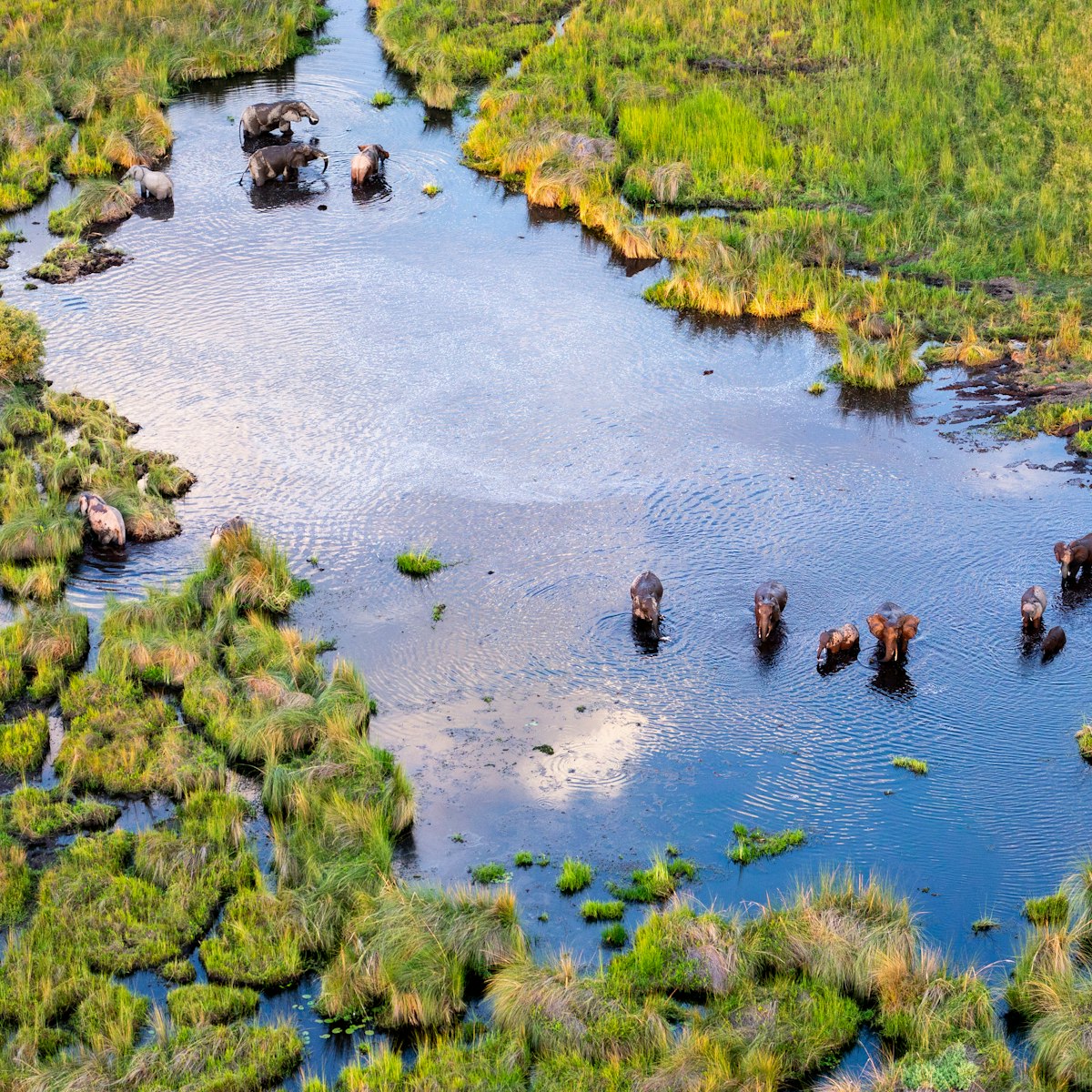
Moremi Game Reserve
Okavango Delta
Moremi Game Reserve, which covers one-third of the Okavango Delta, is home to some of the densest concentrations of wildlife in Africa. Best of all, it’s…

Chief's Island
The largest island in the Okavango Delta, Chief’s Island (70km long and 15km wide) is so named because it was once the sole hunting preserve of the local…
Chobe National Park
Chobe National Park is one of Africa's great wildlife destinations. Famed for its massive elephants and enormous elephant population, Chobe, which…
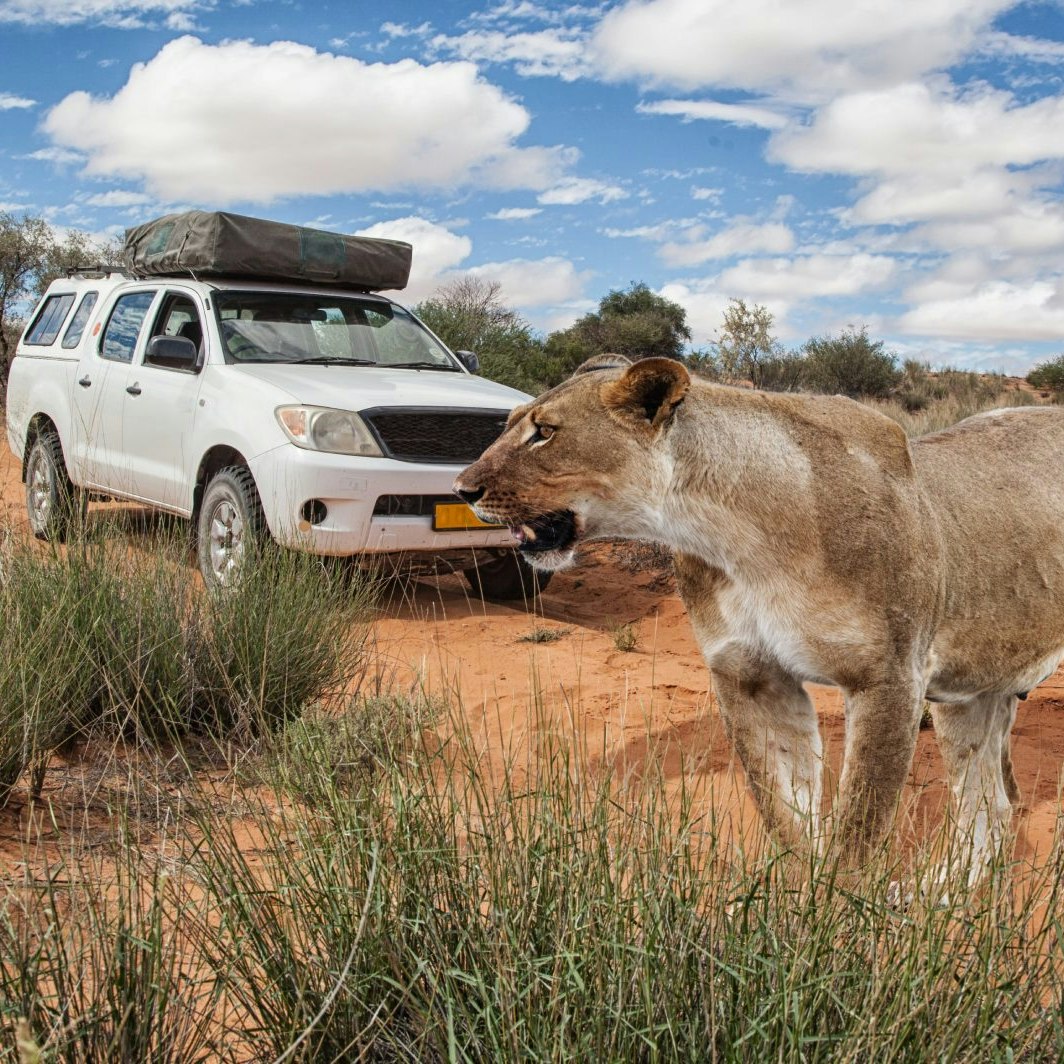
Kgalagadi Transfrontier Park
In 2000 the former Mabuasehube-Gemsbok National Park was combined with South Africa’s former Kalahari Gemsbok National Park to create the new Kgalagadi…

Khutse Game Reserve
This 2500-sq-km reserve, which is an extension of the southern boundary of the CKGR, is a popular weekend excursion for Gaborone residents, but it’s still…
Nxai Pans National Park
This 2578-sq-km park is one of the most accessible places to experience the salt pans that are a Kalahari speciality, although it's more about smaller…

Khama Rhino Sanctuary
With the rhinos all but disappeared from Botswana, Serowe's residents banded together in the early 1990s to establish the 43-sq-km Khama Rhino Sanctuary…
Makgadikgadi Pans National Park
This 3900-sq-km park, the southern section of the Makgadikgadi and Nxai Pans National Park, extends from the Boteti River in the west to the Ntwetwe Pan…
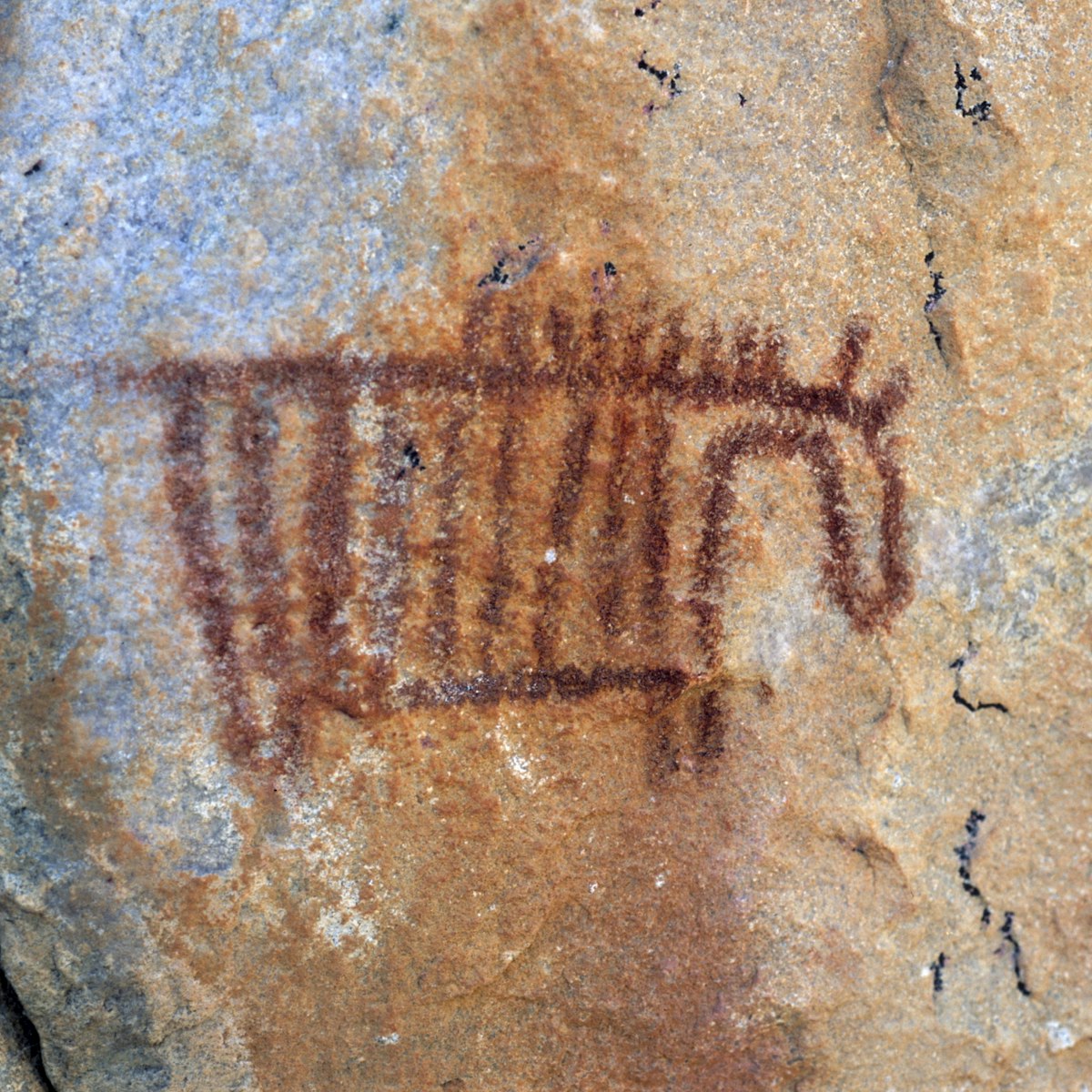
Zebra Painting
One of the most fascinating paintings is the zebra painting on a small outcrop north of Female Hill. This stylised equine figure is now used as the logo…
Leopard Rock
The rocky monoliths that rise up from the Savuti sand provide more than welcome aesthetic relief amid the flat-as-flat plains. The outcrops’ caves, rocky…
Baines’ Baobabs
In the south of the park are the famous Baines’ Baobabs, which were immortalised in paintings by the artist and adventurer Thomas Baines in 1862. Baines,…
Mboma Island
The grassy savannah of this 100-sq-km island, a long extension of the Moremi Tongue, contrasts sharply with the surrounding landscapes and provides some…
Tree of True Knowledge
This odd-looking tree, near a small pool at the start of the Rhino Trail on Female Hill, was described to Laurens van der Post as the Tree of True…
Horned Serpent Natural Cistern
Cliff Trail passes an amazing natural cistern (in a rock grotto near the northwestern corner of Female Hill), which has held water year-round for as long…
Xakanaxa Lediba
With one of Africa’s largest heronries, Xakanaxa Lediba is renowned as a birdwatchers’ paradise. In addition to herons, potential sightings here include…
Paradise Pools
One of the prettiest corners of Moremi, the area known as Paradise Pools is as lovely as the name suggests. In the dry season, trails lead past forests of…
Dancing Penises
Directly across from the hollow on the southeastern side of Female Hill, one of the few Tsodilo paintings containing human figures depicts a dancing crowd…
Whale & Penguin Painting
On the southeast corner of Female Hill, and accessible along the Rhino Trail, look for the amazing whale and penguin paintings that suggest an intriguing…

Nata Bird Sanctuary
This 230-sq-km community-run wildlife sanctuary was formed when local people voluntarily relocated 3500 cattle and established a network of tracks…
Gcwihaba (Drotsky’s) Cave
In 1932 a group of San showed Gcwihaba (meaning ‘Hyena’s Hole’) to a farmer named Martinus Drotsky, who humbly decided to name the cave after himself…

Savuti Marshes
For decades since the early 1980s, this vast open area in southern Savuti consisted less of marshes than sweeping open plains, save for occasional…
Mokolodi Nature Reserve
This 30-sq-km private reserve was established in 1994 and is home to giraffes, elephants, zebras, baboons, warthogs, rhinos, hippos, kudus, impalas,…
Old Palapye (Phalatswe)
About 20km southeast of Palapye, amid low-lying scrub, thinly scattered stone walls mark the site of the former Bangwato capital. Spread over a large area…
Gobabis Hill
In the heart of Savuti, Gobabis Hill is home to several sets of 4000-year-old rock art of San origin. The best are the depictions of livestock halfway to…
Matsieng Rock Carvings
Loaded with cultural and historical significance, the Matsieng Rock Carvings are regarded by the Batswana as one of the four ‘creation sites’. According…
Krokavango Crocodile Farm
It’s difficult to know what to make of this place, not far south of Drotsky’s Cabins (the turn-off from the main Sehithwa–Shakawe road is at GPS S 18°26…
Third Bridge
Literally the third log bridge after entering the reserve at South Gate (although First Bridge and Second Bridge were, at the time of writing, easy to…
Bahurutshe Cultural Lodge
Situated about 5km east of the Botswelelo Centre, in Mmankgodi, and 2km off the Gaborone–Kanye road, is Bahurutshe Cultural Lodge, an innovative cultural…
Moremi Gorge
The approach to steep-walled Moremi Gorge gives little hint of what lies ahead. Once within the site, with its sheer beauty and abundant birdlife (with…
Dombo Hippo Pools
The drive between North Gate (including Khwai) and Xakanaxa Lediba follows one of Botswana’s more scenic tracks, although the exact route changes with the…
Caracal Biodiversity Centre
Signposted as Biodiversity Centre, about halfway between the main highway and the Chobe Safari Lodge, this research and education centre rescues small…
Motetane Gorge
The walls of the Tswapong Hills are riven with deep canyons, and the east–west Motetane Gorge is the prettiest of them. The turn-off to the gorge is well…
Gabatsadi Island
The enormous crescent-shaped dune known as Gabatsadi Island has an expansive view from the crest that has managed to attract the likes of Prince Charles. …
Divuyu Village Remains
An adjunct to the Rhino Trail is a short but hazardously rocky climb along what is sometimes called the Divuyu Trail, leading to the scattered remains of…
Rhino & Giraffe Painting
On the southeast corner of Female Hill, around the corner and to the west of the whale and penguin painting, the rhino and giraffe painting portrays a…
Laurens van der Post's Panel
An adjunct to the Rhino Trail is a short but hazardously rocky climb along what is sometimes called the Divuyu Trail, leading to Laurens van der Post’s…
Origin of Sex Painting
The partially marked Cliff Trail goes past the unassuming site known as the ‘Origin of Sex’ painting, around the northern end of Female Hill and into a…
More destinations you need to see
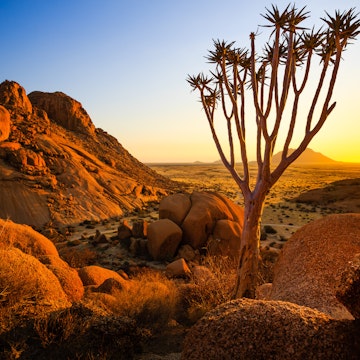

Amidst the economic difficulty and the recent civil unrest that Africa has been experiencing, one aspect of their land has not changed. The spectacular behavior of the animals is very much being expressed here such as the Serengeti Migration. Botswana is a country in Africa that is also affected by the negative economy but still is proud of the stunning vastness of its natural wonders.
Nestled in the heart of Southern Africa, Botswana is a land of extraordinary beauty and untamed wilderness. With its diverse landscapes, iconic wildlife, and rich cultural heritage, Botswana offers an enchanting experience for travelers seeking an unforgettable journey into nature’s embrace.
This place is known for the game reserves that let tourists experience real-life encounters with the animals found in Botswana. Zebras, elephants, gazelles, birds, and some of the cat families including the most popular “king of the jungle” lions are residing in this country as well as the neighboring states that border Botswana.
Kalahari Desert
Embark on a journey to the Central Kalahari Game Reserve, a vast and untamed wilderness teeming with desert-adapted wildlife. Discover the secrets of this arid landscape, where sightings of black-maned lions, cheetahs, and honey badgers make for unforgettable wildlife encounters.
With little or no rain every year, the Kalahari Desert is home to most of Africa’s animals that have well adapted to this kind of extreme environment. With this type of environment, one can see the interaction of every species in order for them to survive. Most researchers go to this place to study the behavior of animals that they can’t find anywhere else on this planet. How these animals survive in the Kalahari Desert is one of the mysteries and wonders of Botswana.
Another amazing feature found in this desert is the famous Bushmen. They are a group of nomadic people that resided in the plains of the Kalahari, and for more than 20,000 years they remain untouched, not knowing that there is a greater and more complicated civilization outside the desert.
Makgadikgadi Pan
Step foot into the otherworldly landscapes of the Makgadikgadi Pans, an ancient salt flat that stretches as far as the eye can see. Explore the surreal landscapes on quad bikes or take a guided walk to encounter meerkats, zebras, and the elusive brown hyena.
One of the largest pans found on this planet, the Makgadikgadi Pan has been undisturbed with just a little involvement of humans because of its harsh environment. This vast pan is once a super lake that has been dried for almost 10,000 years. Although there is less rain recorded every year, the grasslands here attract most grazing animals.
Aside from the grasslands, this place is also composed of some vegetation types – riverine woodland, scrubland, and salt pans. A part of the Makgadikgadi pan has already been made into a natural park so that the animals will be protected against gaming or hunting.
Okavango Delta
As the largest in the world, the Okavango Delta is a place that consists of many channels, lagoons, and lakes that covers a 15,000 square kilometer area. The vast place is home to floras and faunas that depend much on water.
It is not only important to the biodiversity in Botswana, but it is also vital to their economy which promotes ecotourism in this spectacular place. The popular activities a tourist can do in the Okavango Delta are fishing, bird watching, game viewing, and photography. If you are in this place, you are sure that the money you spent is worth it all.
Prepare to be awestruck by the Okavango Delta, a sprawling oasis that enchants visitors with its lush waterways, shimmering lagoons, and verdant islands. Embark on a mokoro (traditional dugout canoe) safari and navigate through narrow channels, encountering elephants, hippos, and an array of bird species.
Baobab Trees
Unveil the remarkable Nxai Pan National Park, home to iconic baobab trees and an array of wildlife. Witness the annual zebra migration, where thousands of zebras traverse the plains, accompanied by predators and scavengers seeking to capitalize on this natural spectacle.
Contrary to what you have been told about Botswana, this place actually possesses more than 3,000 plants and trees which are economically important for food and industry. But what amazes tourists the most is the existence of this particular tree named the Baobab tree which has a unique form.
The weird “upside-down” is a mystery to people visiting there. It is said that these trees were torn by the devil himself and planted in reverse. That is why the form of the Baobab tree is like having roots above the surface.
Chobe National Park
Immerse yourself in the wonders of Chobe National Park, known for its vast herds of elephants and thrilling predator-prey interactions. Embark on game drives and boat safaris along the Chobe River, where you can witness elephants bathing, lions hunting, and an abundance of birdlife in action.
You will be mesmerized by the array of elephants that you experience while safariing on both water and land. You will see elephants and in many cases close encounters that leave you breathless.
Moremi Game Reserve
Venture into the captivating wilderness of Moremi Game Reserve, often regarded as one of Africa’s finest wildlife sanctuaries. Set amidst the iconic Okavango Delta, Moremi offers extraordinary opportunities to spot lions, leopards, wild dogs, and an abundance of bird species in their natural habitat.
Tsodilo Hills
Delve into the ancient rock art and spiritual mystique of the Tsodilo Hills, a UNESCO World Heritage Site. Marvel at over 4,500 rock paintings that depict the rich cultural history of the San people, and listen to captivating stories and legends surrounding this sacred place.
Conclusion:
The natural wonders of Botswana beckon with its natural splendor, where wildlife thrives in pristine habitats and landscapes inspire awe. From the watery wonderland of the Okavango Delta to the mesmerizing Makgadikgadi Pans and the abundant wildlife of Chobe National Park, Botswana offers an immersive safari experience like no other.
As we appreciate and protect these natural treasures, we ensure the continued conservation of Botswana’s exceptional ecosystems for generations to come. Let Botswana’s untamed beauty ignite your sense of adventure and create memories that will last a lifetime.

call +27 (0) 87 898 8043 email Contact Us
- South Africa
10 Places To Visit In Botswana
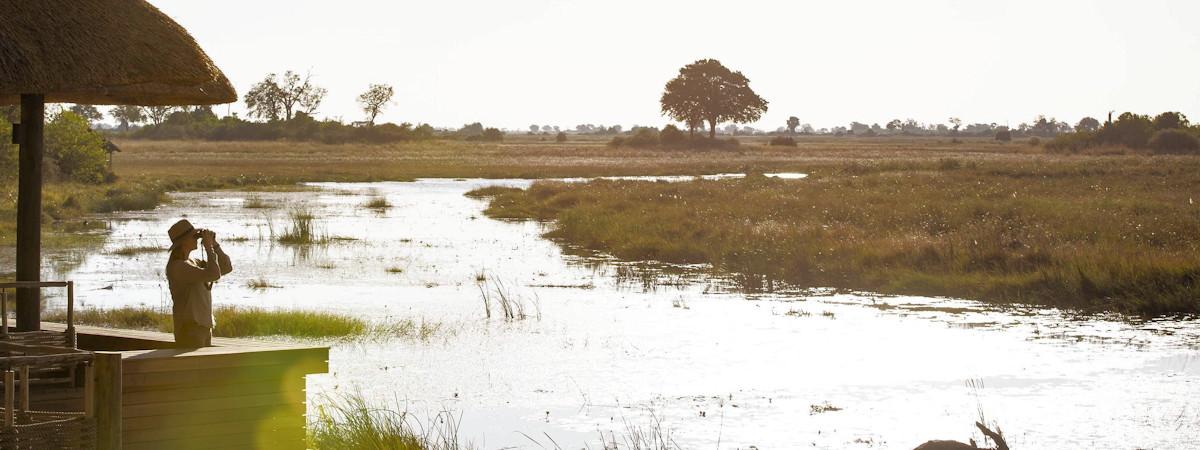
Where To Go And What To Do In Botswana When On Safari
Botswana is a landlocked country located in southern Africa. It shares borders with just two nations: South Africa to the south and Zimbabwe to the north. The other surrounding countries are Namibia, Zambia, and Mozambique. With a total area of 587,000 square kilometres (226,592 square miles), Botswana is one of the world's smallest countries. However, it is also among those turning from rural economies into modern ones with each passing day.
The largest city and capital of Botswana is Gaborone. The city was established as an administrative centre for British settlers during colonial times when Botswana was still under their administration as Bechuanaland Protectorate. In 1965 however, Botswana attained full independence, and since then, it has been one of the most peaceful and politically stable countries in Africa.
Unesco World Heritage Site (s) In Botswana;
- The Okavango Delta
- And the Tsodilo Hills
Botswana is also home to some of the world's most unique landscapes and ecosystems. The country is largely covered by the Kalahari Desert, which spans much of southern Africa. The Okavango Delta is another notable feature. This is the world's largest inland delta, teeming with wildlife. The Chobe National Park is also worth mentioning. It is one of Botswana's most popular tourist destinations, and it is home to a large population of elephants.
If you are looking for a place to get away from it all and immerse yourself in nature, Botswana should be high on your list of places. So without further ado, here is our list of what to do and where to go in Botswana and where to go.
Here They Are: The 10 Must-See Tourist Attractions In Botswana
1. okavango delta, mokoro safaris on the waters of the okavango.
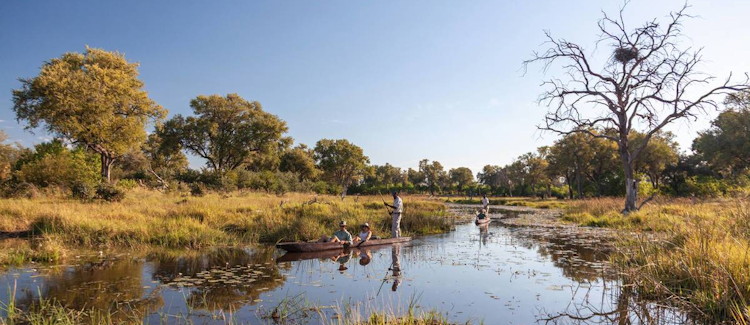
The Okavango Delta is one of the most beautiful places on earth and one of the top destinations to visit in Botswana. This vast delta is teeming with wildlife and is a popular destination for safaris. Visitors can explore the area by 4x4 game drive vehicle, boat, canoe, horseback, or foot. There's no better way to experience the magic of the Delta than by spending time in this awe-inspiring natural wonder.
The Okavango Delta is a Unesco world heritage site for those who did not know.
Getting into Botswana's Okavango Delta is either by a fly-in or road transfer option, depending on where one destination is. Certain lodges, camps and destinations can only be accessed via light aircraft.
2. Chobe National Park
Photograph the chobe river on a sunset cruise.
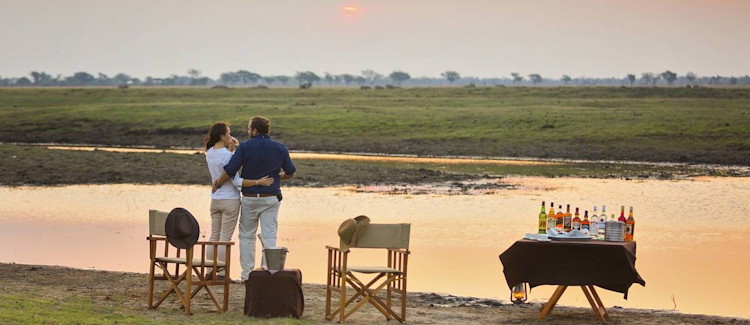
Chobe National Park is one of the most popular places to visit in Botswana, and for a good reason. The park is home to some of the most diverse wildlife in Africa, including elephants, lions, leopards, and buffalo. Birdlife on the Chobe river is spectacular, especially in the summer months.
Visitors can enjoy several activities in the park, including game drives, boat cruises, and sunset cruises.
Several lodges and tented camps are located in the Chobe and on the Chobe River, each offering its own unique experience.
More budget-friendly resorts, boutique hotels and safari hotels can be found in and around the town of Kasane, which borders the Chobe. All these establishments will offer a host of morning, afternoon or full-day safari activities within the park and on the Chobe River.
Getting into the Chobe National Park is easy; either enter from Namibia's Zambezi Region in the west, from the Savuti region in the South or from the town of Kasane in the east. There are direct flights from Johannesburg, Maun and Victoria Falls.
3. Moremi Game Reserve
Some of the best game viewing in africa.
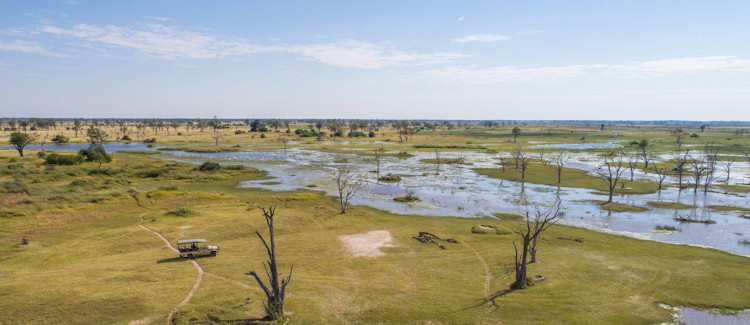
Moremi Game Reserve (part of the Okavango Delta) is one of the most popular tourist destinations in Botswana. It is known for its incredible wildlife, including lions, elephants, leopards, and, if lucky, endangered wild dogs. Visitors can enjoy exceptional wildlife and birdlife and world-class safari activities and accommodation establishments.
Moremi Game Reserve within the Okavango Delta is the only protected area in the Okavango run by Botswana's park board. All other areas within the Delta are private community-run wildlife concessions.
Most areas within the Moremi are accessible via 4x4 vehicle, although the more wild and remote camps are accessible only via light aircraft. Driving to the Moremi is almost a game drive itself; you will see a lot of wildlife as you get closer to the entry gates.
4. Makgadikgadi Pans National Park
Photograph and witness vast herds of zebra as they migrate.
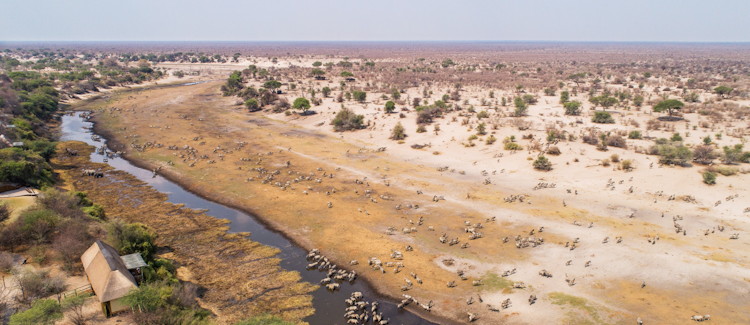
The Makgadikgadi Pans National Park is a large, open expanse of salt flats in Botswana that make up the largest salt pan in the world. The pans are home to wildlife, including zebra, antelope, lions, and elephants.
Activities within the park visitors are limited to game drives as water is rare in this region of Botswana. On the Pans side, one has access to 4x4 and quad bike tours, sleepouts, horse riding trails, birding photography excursions and meerkat tours.
Makgadikgadi Pans National Park is accessible via the Boteti River side of the park, this is the side one will enter to access the lodges, and wildlife activities are limited to game drives only.
To access the Makgadikgadi Pans , either Nwetwe or San Pan, one needs to travel further east from Maun to the towns of Gweta and Nata. Accommodation options between these two towns offer direct access to the pans' safari activities.
5. Nxai Pan National Park
Take it all in from under the shade of baines baobabs.
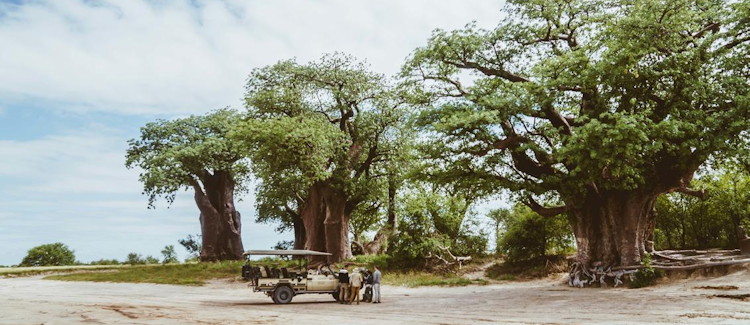
Nxai Pan National Park is located just north of the Makgadikgadi Pans and around a two-hour drive from Maun. This park is known for its large population of elephants and is a great place for wildlife enthusiasts to visit. Lion, leopard, giraffe and general plains game can also be spotted when game viewing.
The Baines baobabs are a sight to behold and a popular tourist attraction in Botswana. These towering baobab trees are located in the north-eastern part of the country, within the Nxai Pan National Park. They are named after Thomas Baines, who was one of the first Europeans to visit the area.
If you are looking for something off the tourist route in Botswana, check out the Baines Baobabs. These massive trees are an impressive sight and, when combined with the excellent wildlife that surrounds will surely leave you with lasting memories.
Getting into Nxai Pan National Park is 4x4 only, while the entrance gate is within a 2 hours drive from Maun. Nxai Pan and Baines Baobabs are the perfect self-drive destination if you are confident enough.
6. Central Kalahari Game Reserve
Sunset drinks at the waterhole at pipers pan.
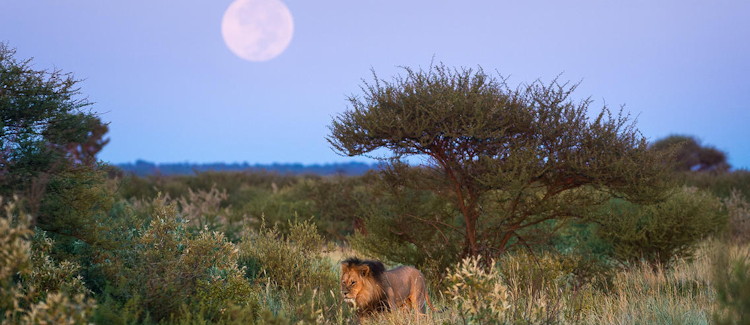
Central Kalahari Game Reserve is the world's second-largest game reserve and is located, as the name suggests, in the centre of the Kalahari Desert. The reserve is known for its desert-based wildlife, including lions, hyenas, wild dogs, elephants, and plains game. Visitors can enjoy wild and remote safaris in the park with only 4x4 game drives.
Central Kalahari Game Reserve is a fantastic safari destination and is a firm favourite here at Uyaphi, especially Pipers Pan. The Pipers Pan area is probably as wild and remote a destination that one can find in Africa today.
Getting to the Central Kalahari Game Reserve is via light aircraft if you stay at one of the tented camps and lodges within the reserve or bordering the reserve. Other than that flying, it is strictly 4x4 with low range gearing only; the Kalahari Desert sands are challenging to drive through.
7. Kgalagadi Transfrontier Park
Experience the wild and remote southern kalahari desert.
Kgalagadi Transfrontier National Park (formerly the Kalahari Gemsbok National Park) is shared between Botswana and South Africa. It is situated in an area where the two countries borders meet, and it covers an area of 38,000 square kilometres.
There are no lodges or camps on the Botswana side, only remote campsites with the bare basics in facilities at best; long drop toilets are part and parcel of the experience.
To access the Kgalagadi from the Botswana side, one has to be skilled in sand 4x4ing and knowledgeable in map reading. This side of the Kgalagadi is one of those places to visit that is not for the faint-hearted.
8. Tsodilo Hills
Stand next to rock art that is 24 000 years old.
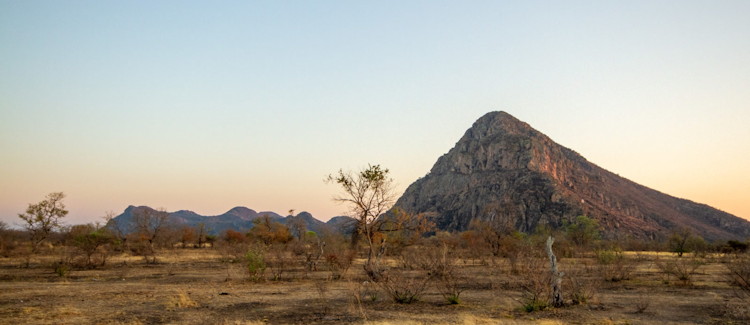
Tsodilo Hills is an important archaeological site in Botswana, with the site being home to over 4 500 San Bushmen rock paintings and carvings. Proclaimed as a UNESCO World Heritage Site in 2001, a few of the rock paintings were dated back to 24 000 years ago; yes, that is 24 000 years ago (8 760 000 million days ago). For us, that is a mind-blowing number.
Certainly not a popular destination but an exceptionally important one in terms of Botswana and the human race's culture.
Other than a few nearby Okavango Delta Pan Handle lodges, only camping is available at Tsodilo Hills .
Getting to the Tsodilo Hills is relatively easy, simply jump in a high clearance vehicle and drive for approximately 6 hours and you are there. Or better still, splash out on a helicopter tour from Maun; yes expensive, but the sights you will see from the air will wow you in every way possible.
9. Linyanti Wildlife Reserve
Live the high life surrounded by wildest africa.
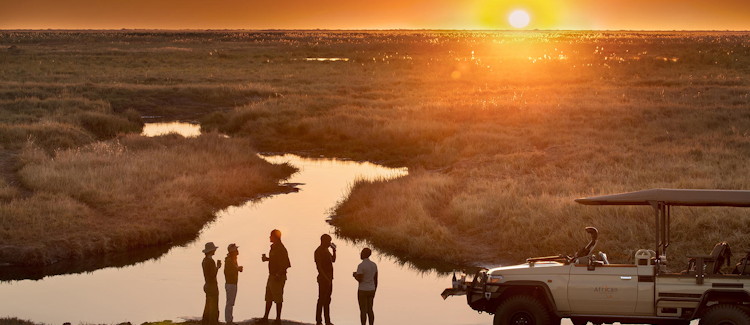
The Linyanti is a 9,000 square kilometre reserve located in northwest Botswana's Chobe and Linyanti river systems. The reserve is known for its large population of elephants and its wildlife diversity, including predators such as lions, hyenas, leopards, African wild dogs and cheetahs, as well as a large variety of plains game.
Visitors can enjoy activities such as game drives, night drives, mokoro expeditions, and walking options.
Both wildlife and birdlife are exceptional in the Linyanti and Selinda regions, and this can be seen in the rates that the lodges and camps charge. It is quite simple; the better the game viewing, the more it costs to stay for a night.
When on safari in the Linyanti area, we highly suggest that one fly-in on a light aircraft; a fly-in transfer is by far and away the best option. Road transfers are available but they will be between 8 to 10 hours long depending on the condition of the roads.
Photograph The Lions And Elephant Of This Famed Wildlife Region
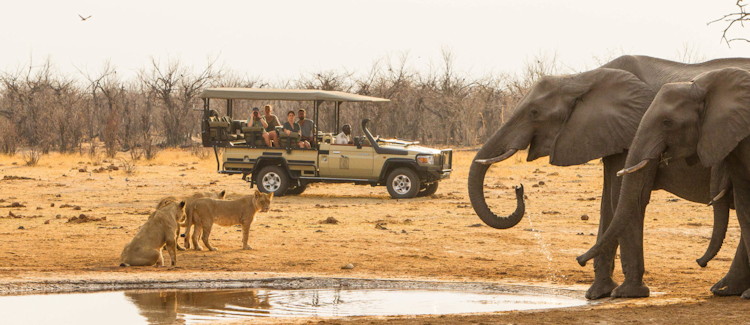
Savuti is one of the must-see, must-experience and must-visit in Botswana wildlife destinations. Savuti is a beautiful and serene area located in the Chobe National Park and should be included on all itineraries. It is well-known for its large populations of lions, elephants herds, hyenas, leopards and buffalo.
There is a range of safari lodges and camps to choose from in and around Botswana's Savuti region . The main safari activity offered by a whole host of safari lodges and tented camping in the Savuti region is, of course, game drives.
Depending on one's safari itinerary, a road transfer from the western regions of the Okavango Delta and the Moremi Game Reserve would be a viable option, probably 4 to 5 hours in a 4x4 safari vehicle (game viewing the whole way). Should one be looking at getting to the Savuti region from either Maun or Kasane, we would highly recommend a light aircraft or helicopter transfer.
And that is that, the end of our list of the best Tourist Attractions In Botswana.
Hope you enjoyed :) Please do not forget that there are options: the Tuli Block, Khama Rhino Sanctuary (save Botswana's endangered rhinos), the Selinda region, and numerous small yet amazing attractions.
If you're looking for an unforgettable African wildlife experience, be sure to add Botswana to your travel bucket list . With its many parks and reserves, there is something for everyone who loves nature and animals. You can explore the Okavango Delta by mokoro (dugout canoe), go on a safari in the Chobe, or visit the Makgadikgadi Pans.
So what are you waiting for? Start planning your Botswana adventure today!
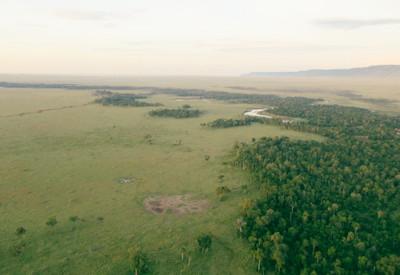
Botswana Wildside Safari
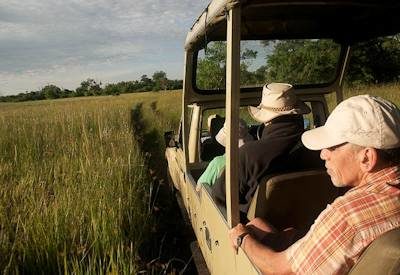
- Departure ; Scheduled and tailor-made departure dates
- Duration ; 13 Night Botswana Safari
- Lodging ; Limited participation camping safari
- Group Size ; Minimum 2
- Note : Travel insurance is compulsory for all safaris
Highlights Of Northern Botswana
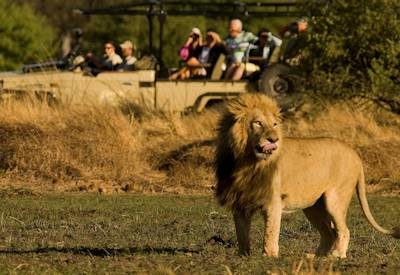
- Duration ; 10 Day Botswana Safari
- Lodging ; Fully Serviced Camping Safari
- Group Size ; Maximum 9
Highlights of Botswana Safari
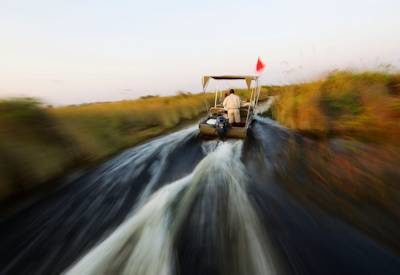
- Duration ; 10 Days / 9 Nights
- Lodging ; Luxury Safari Camps
Botswana Wild Parks Safari
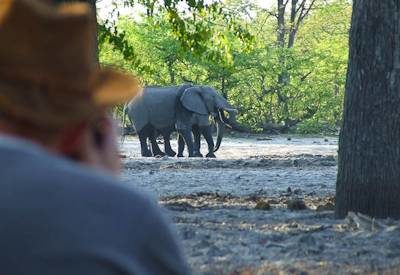
- Duration ; 14 Days / 13 Nights
- Lodging ; Lodges, tented lodges, tented camps and/or chalets
Delta Miracle Safari
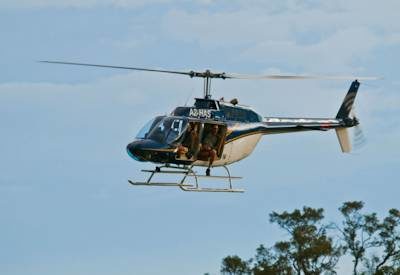
Desert, Delta & Sunsets Safari
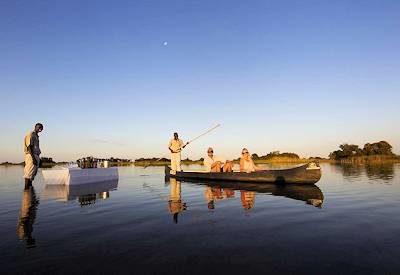
- Duration ; 7 Days / 6 Nights
- Lodging ; Safari Lodges

Botswana: 5 must-explore national parks and game reserves

Botswana is not only regarded as one of the most exclusive safari destinations in Africa, but one of the most remarkable wilderness areas on earth. Boasting vast areas of protected wilderness, pristine landscapes, and a rich diversity of wildlife, as a safari destination, Botswana is hard to top.
The south and east of Botswana consist of the jaw-dropping Kalahari Desert and lunar-like pans at Nxai and Makgadikgadi. The north and west, on the other hand, comprise the dazzling water worlds of the Okavango Delta and Chobe River ecosystem. The sheer diversity of Botswana’s terrain lends itself to an endless array of things to do, see, and explore.
Whether it’s the allure of free-roaming wildlife, spectacular natural landscapes and rich cultural immersion, Botswana is sure to have it in spades. Landlocked in Southern Africa, Botswana offers some of the most abundant wildlife viewing opportunities on the African continent, whether you bed down at an out-of-this-world luxury lodge or enjoy the simple comfort of a rooftop tent.
Whether it’s your first trip to Botswana or your 10th, there is always something unique and exciting to experience when visiting one of Africa’s most extraordinary safari destinations.
If you consider yourself a head-over-heels nature and wildlife lover, here are 5 of the best must-explore national parks and game reserves in Botswana that absolutely deserve to be on your African safari bucket-list.
#1 Okavango Delta

One of the largest inland deltas, the vast and virtually untouched freshwater wetland that is the Okavango Delta is deemed one of the world’s premier wilderness areas. The Delta is also a UNESCO World Heritage Site and was voted one of the Seven Natural Wonders of Africa in 2013.
The Delta covers between 6 and 15 000 square kilometres of Kalahari Desert in northern Botswana and owes its existence to the Okavango (Kavango) River. The Okavango River cuts through the center of the Kalahari Desert, creating a unique inland water system that gives life to a vast diversity of birdlife and wildlife as well as the Okavango Delta’s dynamic ecosystem.

Unlike most river deltas the Okavango River empties onto open land, flooding the savanna and creating a unique and ever-changing inland delta. The Okavango Delta is affected by seasonal flooding, with the delta floods covering over 6,175 square miles/ 16,000 square kilometers every year. The Delta’s peak flood season takes place during May – October (with water levels being at its highest during June – August). The Delta’s peak flood season coincides with Botswana’s dry season, which in turn coincides with great migrations of plains game from the dry hinterland. During the Okavango Delta’s dry season, around 260,000 mammals are estimated to congregate around the delta, resulting in pristine wildlife sightings and encounters. The Delta is also known as a world-famous stronghold for predators and an exceptional birding site, home to approximately 530 bird species.

Besides enjoying an authentic African safari, by far one of the top things to do in Botswana is mokoro through the Okavango Delta. A mokoro is a traditional dug-out canoe which is used to traverse and explore the waterways and channels of the Okavango Delta. Enjoying a mokoro journey through the Delta is not only a unique bucket-list worthy safari experience, but gives you the opportunity to see and explore hidden gems, secret spots, rare sightings, and smaller things you’d miss on a traditional game drive.
#2 Moremi Game Reserve

Covering one third of the Okavango Delta in Botswana, bordering on the Chobe National Park, the Moremi Game Reserve, also known as the Moremi Wildlife Reserve, is a small reserve which is home to a dense concentration and vast diversity of African wildlife. This undoubtedly makes the Moremi Game Reserve one of the top tourist attractions in Botswana for any wildlife enthusiast.
Known for its exceptional and abundant wildlife, Moremi Game Reserve and adjoining private land concessions in the Okavango provide the perfect environment in which to see endangered Wild Dogs and other rare wildlife species in their natural habitat. Some of these rare species include, the Black-maned Kalahari Lion, Sitatunga, Puku and Red Lechwe antelope, Brown Hyena, the African Skimmer and Aardvark.

The Moremi Game Reserve is also regarded as one of the best reserves to spot the renowned African Big Five (lion, leopard, rhino, elephant, and buffalo) thanks to the recent re-introduction of both black and white rhino into the area. If you’re an avid bird lover, you are in for quite a treat as Moremi Game Reserve’s birdlife is truly unrivalled with over 500 species to admire.

July through to October is the best time to visit this amazing part of Botswana, with 4×4 safaris combined with water-based traditional mokoro trips being the best and most unique way to see the abundant wildlife and birdlife the Moremi Game Reserve has to offer.
#3 Chobe National Park

The renowned Chobe National Park lies within Botswana’s Okavango Delta and covers four distinct eco-systems. Chobe National Park is home to over 120,000 African elephants, making it one of the top places on the planet to see these huge mammals in their natural environment. The best time of year to enjoy spectacular sightings of these gentle giants of the African bushveld is during Botswana’s cooler, winter months (dry season) between May and September when enormous herds congregate on the banks of the Chobe River.
The unspoilt wilderness of Chobe National Park not only supports the world’s largest concentration of African elephants, but a multitude of buffalo and a remarkable and vast diversity of wildlife and birdlife. The Savuti Marsh in particular offers some of the highest concentrations of wildlife in Africa all year round.
The Chobe National Park is also home to the beloved endangered African wild dogs, jackals, leopards, and various predators, to mention a few. The Savuti region of the Chobe National Park is notoriously known for brutal clashes between lions and hyenas as well as where powerful prides famously take down Africa’s biggest game like buffalo, giraffe and even elephants.
You can self-drive in Chobe National Park, which makes it a great park to visit for those on a road trip or on an African wildlife adventure. You can also easily do a daytrip from Zimbabwe or Zambia. Alternatively there is a wide variety of accommodation options available.
#4 Makgadikgadi Pans National Park & The Nxai Pan National Park
#makgadikgadi pans national park.

One of the largest salt pans in the world, Makgadikgadi was once a lake covering a vast 10,000 square kilometers of north-eastern Botswana. While the cracked and dry Makgadikgadi Salt Pans may not look like the type of environment that would attract a large population of wildlife, people will be pleasantly surprised when visiting this unique part of Botswana.
During summer, the desolate dry expanses of Makgadikgadi come to life with thriving grasslands, attracting a vast diversity of wildlife, including springbok, wildebeest and zebra followed closely by lion and cheetah. Shallow waters begin to flood over seemingly endless pans, drawing thousands of flamingos.
By far one of the top highlights of visiting the Makgadikgadi Salt Pans during Botswanan’s wet season is seeing Southern Africa’s largest zebra migration from the Boteti River. During the annual zebra migration visitors will have the opportunity to witness thousands of zebras move through Botswana’s Makgadikgadi and Nxai Pan National Parks. The annual zebra migration is the second largest migration of wildlife in Africa.

#The Nxai Pan National Park

Technically part of the Makgadikgadi Salt Pans, Nxai Pan was created as an extension to expand the conservation area. Situated within Nxai Pan you’ll find the magnificent and highly sought-after wilderness and safari destination, the Nxai Pan National Park. While the spectacular scenery and vast landscapes is one of the area’s main draws, boasting remarkable sand dunes, towering baobab trees, and of course the salt pans themselves, Nxai Pan and Nxai Pan National Park has so much to offer.
During Botswana’s rainy season (from November to April), the lakebed becomes beautifully lush and green, playing host to an incredible variety of wildlife that migrate through the area. When flooded, the pans also offer exceptional birding and vast game-viewing opportunities. Another wet season highlight is the great annual zebra migration which sees thousands of zebras move through Botswana’s Makgadikgadi and Nxai Pan National Parks. Although the Great Migration in the Serengeti and the Masai Mara is the most famous and biggest land migration in the world, Botswana’s zebra migration is actually the longest migration as well as the second largest migration of wildlife in Africa.

While Nxai Pan and Nxai Pain National Park is open to visitors and wildlife lovers all year round, the rainy (wet season – November to April) is undoubtedly the best time to visit this majestic part of Botswana. In addition to the annual zebra migration, visitors are more likely to witness vast herds and a wide range of wildlife during this time of year, including lions, giraffes, kudu, springbok, impala, wildebeest, ostriches, jackals, bat-eared foxes, to mention merely a few of its wildlife highlights. Not to mention the incredible variety of birdlife you’ll encounter.
As the Nxai Pan National Park is located in the north-eastern part of Botswana, you can easily combine your visit with a trip to the Okavango Delta and Chobe National Park, which reaches into the park.
#5 Central Kalahari Game Reserve & The Kgalagadi Transfrontier Park
#central kalahari game reserve.

Botswana’s three Kalahari parks, namely Nxai Pan National Park, the Central Kalahari Game Reserve and Makgadikgadi Pans National Park, are a far cry from the common image of a sandy wasteland many might be expecting. Instead, the Kalahari boasts beautiful, wooded grasslands and seasonally flooded pans which are home to an astonishing diversity of wildlife. As the Kalahari and its vivid landscapes are vastly different to Botswana’s more popular destinations, it is the ideal destination for seasoned travelers looking for a unique and authentic African safari experience.
Besides classic Kalahari wildlife such as zebra, wildebeest, oryx, eland, springbok and giraffe, Botswana’s three renowned Kalahari parks have a reputation for its vast predator activity. When visiting the Kalahari, wildlife lovers are likely to encounter black-maned Kalahari lions, cheetah, black-backed jackal, brown and spotted hyena, leopard, and rare and endangered wild dog sightings. A Kalahari safari also gives you the opportunity to see several of Africa’s smaller and more elusive animals such as the wild cat, porcupine, aardwolf, meerkat, and honey badgers.
Birdlife in the Kalahari is surprisingly exceptional, especially during Botswana’s rainy summer months between December and April. Avid birders can enjoy incredible sightings of flamingos, secretary birds, martial eagles, great white pelicans, and giant eagle owls.
#The Kgalagadi Transfrontier Park

Boasting sand dunes, salt pans, and a thriving diversity of wildlife, Kgalagadi Transfrontier Park is one of the best parks to visit in Botswana during the rainy summer months (November – April). Regarded as one of the largest parks in Botswana, the Kgalagadi Transfrontier Park covers an estimated area of 14,670 square miles/ 38,000 square kilometers. Its size is largely due to the fact that it encompasses two previously separate parks: The Kalahari Gemsbok National Park in South Africa and Gemsbok National Park in Botswana.
While you won’t find the entire African Big 5 here, migrating herds of wildebeest and other antelope attract large numbers of predators and raptors – resulting in some pretty spectacular sightings. The protected area that makes up the Kgalagadi Transfrontier Park is unfenced, which allows the wildlife to follow their ancient migration routes.
If you’re a keen adventurer and wildlife enthusiast looking to experience an off-the-beaten-path African adventure, visiting the Kgalagadi Transfrontier Park should undoubtedly be on your safari bucket-list. The Kgalagadi Transfrontier Park is not easy to get to, especially from the Botswana side. You’ll need a 4×4 and the ability to camp self-sufficiently if you’re eager to explore and experience this majestic piece of Botswana wilderness.
Contact Secret Africa
+27 21 204 6073
Email: [email protected]
Address: Workshop17, 17 Dock Road, V&A Waterfront, Cape Town, 8005
Important Pages
- Privacy Policy
- Terms & Conditions
- Newsletter Sign Up

This site uses cookies. By continuing to browse the site, you are agreeing to our use of cookies.
Cookie and Privacy Settings
We may request cookies to be set on your device. We use cookies to let us know when you visit our websites, how you interact with us, to enrich your user experience, and to customize your relationship with our website.
Click on the different category headings to find out more. You can also change some of your preferences. Note that blocking some types of cookies may impact your experience on our websites and the services we are able to offer.
These cookies are strictly necessary to provide you with services available through our website and to use some of its features.
Because these cookies are strictly necessary to deliver the website, you cannot refuse them without impacting how our site functions. You can block or delete them by changing your browser settings and force blocking all cookies on this website.
These cookies collect information that is used either in aggregate form to help us understand how our website is being used or how effective our marketing campaigns are, or to help us customize our website and application for you in order to enhance your experience.
If you do not want that we track your visist to our site you can disable tracking in your browser here: Click to enable/disable Google Analytics tracking.
We also use different external services like Google Webfonts, Google Maps and external Video providers. Since these providers may collect personal data like your IP address we allow you to block them here. Please be aware that this might heavily reduce the functionality and appearance of our site. Changes will take effect once you reload the page.
Google Webfont Settings: Click to enable/disable Google Webfonts.
Google Map Settings: Click to enable/disable Google Maps.
Vimeo and Youtube video embeds: Click to enable/disable video embeds.
You can read about our cookies and privacy settings in detail on our Privacy Policy Page.

See More Stories Like This

National Geographic content straight to your inbox—sign up for our popular newsletters here

A giraffe rises above the brush in Mokolodi Nature Reserve near Gaborone.
Discover the Best of Gaborone
Get to know Gabs with these top 10 tips.
The starting point of many a memorable African journey, Gaborone is Africa for beginners with an uncomplicated introduction to southern African cuisine, traditional handicrafts, and epic wildlife.
Just as Gaborone is a gentle introduction to urban Africa, Gaborone Game Reserve prepares you for wilder lands not far away. Its highlights include elands (the world’s largest antelope species), unicorn-like gemsboks, and extravagantly horned kudus, as well as wildebeest, ostriches, warthogs, and abundant birdlife. The absence of predators means you can stretch your legs at numerous observation areas.
Natural Wonder
Botswana is not known for its topographical variety, which is why the Tswapong Hills , a two-hour drive north, then east of Gaborone make such an impression. These bouldered hills form steep-sided gorges (a refuge for the Cape vulture that wheels overhead with its vast wingspan) offering ample opportunities to hike and to picnic.
National Park
Khutse Game Reserve , a less-than-three-hour drive west of Gaborone, is one of Africa’s most underrated parks. Drawing weekend visitors from Gaborone, Khutse’s salt pans and golden grasslands offer up lion, leopard, giraffe, jackal, gemsbok, and ostrich. The farther north you venture into the reserve, and beyond into the iconic Central Kalahari Game Reserve , the stronger the sense of deep Kalahari immersion.
Archaeological Site
Close to where the Tswapong Hills rise abruptly from sandy plains two hours northeast of Gaborone, a striking, Gothic mud-brick church stands lonely vigil and crumbling stone walls lie scattered across the bush. The site of Phalatswe (Old Palapye), a prosperous 19th-century city once home to 30,000 people, it’s one of few extant ruins in this part of Africa.
UNESCO Site
Among Africa’s most extraordinary natural realms, the Okavango Delta , a UNESCO World Heritage site since 2014, shelters some of the planet’s richest wildlife concentrations. The skein of waterways is a world in motion, with water levels rising and falling at the behest of annual rainfall hundreds of miles away. It’s a day-long drive from Gaborone, but flights take you there in an hour.
Cultural Site
Botswana’s National Museum and attached Art Gallery could do with a much-promised overhaul, but you’ll still learn the nation’s story, stare down a stuffed lion, and, if you’re lucky, catch an exhibition by a local artist.
Off the Beaten Path
Well-meaning locals love their malls and will send you in their direction if you mention the word shopping. All well and good, but for something more appreciably local, try low-key Thapong Visual Arts Center where you can sit in the dirt alongside the resident contemporary artists, chatting with them while they produce works of real quality.
- Nat Geo Expeditions
Most Iconic Experience
Standout attractions in Gabs are few. If, however, like everybody else you’re here en route to your safari, head first for Mokolodi Nature Reserve , with its giraffe, elephant, leopard, and cheetah, as well as a breeding center for rare and endangered species and a sanctuary for orphaned or injured birds and animals.
So spread out are the city’s watering holes that most expats and middle-class locals head for their favorite bar-restaurant and stay until closing time. Bull and Bush Pub is a Gaborone classic, echoing with tall tales from the safari circuit. There’s a South African-style braai (barbecue), Lion Lager, and other southern African brews on tap, as well as great music.
Neighborhood to Explore
As a general rule, Gaborone doesn’t do hip, but the Kgale Hills Shopping Mall comes close. Its Café Dijo hosts Gaborone’s trendy young things and expats who linger over their lattes, carrot cake, and Wi-Fi. Almost next door, Kalahari Quilts turns out some of Botswana’s most beautiful cloths—stop and watch the artists at work.
FREE BONUS ISSUE
Related topics, you may also like.

10 best things to do in Switzerland

How to plan the ultimate road trip adventure in Canada

Wild Memphis: how a new paddle-powered tour sees the musical city in a new light

Get ready for your next iconic adventure like a pro with these tips

Winter vacations don't have to be about snow—check out these perfect getaways
- Environment
- Perpetual Planet
History & Culture
- History & Culture
- History Magazine
- Mind, Body, Wonder
- Paid Content
- Terms of Use
- Privacy Policy
- Your US State Privacy Rights
- Children's Online Privacy Policy
- Interest-Based Ads
- About Nielsen Measurement
- Do Not Sell or Share My Personal Information
- Nat Geo Home
- Attend a Live Event
- Book a Trip
- Inspire Your Kids
- Shop Nat Geo
- Visit the D.C. Museum
- Learn About Our Impact
- Support Our Mission
- Advertise With Us
- Customer Service
- Renew Subscription
- Manage Your Subscription
- Work at Nat Geo
- Sign Up for Our Newsletters
- Contribute to Protect the Planet
Copyright © 1996-2015 National Geographic Society Copyright © 2015-2024 National Geographic Partners, LLC. All rights reserved
Related Guides:
Botswana Landmarks and Monuments
(botswana, bw, southern africa), tsodilo hills, baines baobabs (seven sisters), matsieng footprints, kubu island, livingstone cave (kobokwe cave).
© Copyright TravelSmart Ltd
I'm looking for:
Hotel Search
- Travel Guide
- Information and Tourism
- Maps and Orientation
- Transport and Car Rental
- GBE Airport Information
- History Facts
- Weather and Climate
- Towns and Cities
- Gaborone Tourism
- Accommodation
- Hotels and Accommodation
- Popular Attractions
- Tourist Attractions
- Landmarks and Monuments
- Museums and Art Galleries
- Attractions Nearby
- National Parks
- Golf Courses
- Things to Do
- Events and Festivals
- Restaurants and Dining
- Your Reviews of Botswana
- Africa World Guide
- Guide Disclaimer
- Privacy Policy / Disclaimer
THE 10 BEST Botswana Sights & Historical Landmarks
Botswana landmarks.
- Points of Interest & Landmarks
- Sacred & Religious Sites
- Historic Sites
- Churches & Cathedrals
- Monuments & Statues
- Government Buildings
- Historic Walking Areas
- Architectural Buildings
- 5.0 of 5 bubbles
- 4.0 of 5 bubbles & up
- 3.0 of 5 bubbles & up
- Budget-friendly
- Good for Big Groups
- Good for a Rainy Day
- Good for Kids
- Good for Adrenaline Seekers
- Good for Couples
- Adventurous
- Hidden Gems
- Honeymoon spot
- Things to do ranked using Tripadvisor data including reviews, ratings, photos, and popularity.

1. Three Chiefs' Statues

2. Tsodilo Hills
Recommended Sightseeing Experiences (206)

3. Kuminda Farm

4. Khwai River Bridge

5. ISKCON Gaborone

6. Kgale Hill

7. Sri Balaji Temple
8. Boab Prison Tree

9. ISKCON Gaborone (Krishna Balaram Palace)
10. Christ the King Cathedral

11. Matsieng's Footprints
12. National Assembly Building
13. Trinity Church
14. Lentswe-la-Oodi Weavers
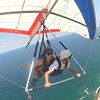
15. Old Palapye

16. Bahurutshe Cultural Village

17. Jamia Mosque
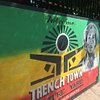
18. Manyana Rock Paintings

What travelers are saying

Call Us +27 83 378 3575
- Destinations
- Experiences
- Enquire Now

Botswana Safari
Why go to botswana.
Travel to Botswana for an unforgettable insight into untouched Africa. Home to wildlife gems like the Okavango Delta and Chobe Park , Botswana is where you’ll see the largest elephant herds on the continent. It’s also a place to track big cats and wild dogs, explore teeming wetlands, and watch Africa’s big game in pristine, beautiful landscapes.
Botswana Safari: Our Top Regions to Visit
- Okavango Delta – Botswana’s wildlife showpiece; choose between water & land-based camps, explore by 4X4, boat & on foot.
- Moremi Game Reserve – protecting much of the Okavango Delta, Moremi is home to big cats, wild dogs & amazing birding.
- Chobe National Park – Framed by the Chobe River, Botswana’s heavyweight destination is famous for elephant & buffalo as well as all the big predators.
- Savuti – notorious for its ever-battling lions & hyenas, Chobe’s remote Savuti region delivers wild, anything-can-happen game viewing throughout the year.
- Kalahari – a great summer destination, the game-rich Kalahari delivers big cats, antelope herds & walks with Bushman guides.
Set at the heart of southern Africa, Botswana appears remote but it’s a destination easily experienced. Direct flights connect it with Cape Town and Johannesburg, and Botswana safaris often finish with a flourish at next-door Victoria Falls . Travellers can join guided overland tours or fly from camp to camp on a private itinerary. Safari accommodation ranges from grand riverside lodges to intimate tented camps and honeymoon hideaways; the standard of comfort, food and service is very high.
Botswana is also a very safe country to visit, having enjoyed decades of peace and stability. Botswana travel infrastructure is professional and well developed. You’ll enjoy great guiding throughout its parks and reserves with game drives taking centre stage but you’ll have the chance to sit back on a canoe in the Okavango Delta , and cruise down the Chobe River at sunset.
Travel to Botswana’s private concessions and you’ll enjoy night drives and guided bush walks too. Home to some of the country’s best safari lodges, Botswana’s exclusive-use reserves sit in areas famous for some of Africa’s most sought-after sightings: wild dog packs and leopards plus lions that prey on buffalo and hippo in titanic battles.
The perfect destination for discerning travellers and privacy-seeking couples, Botswana is also a great for families with older children (normally 6 and older). Several camps offer four-sleeper chalets and family-oriented activities; larger, multigenerational families and groups can also be catered for at private camps. And although travellers on a tight budget may think that a Botswana Safari is out of reach, there are several overland camping options that comfortably deliver all the right places with genuine affordability.
Botswana on the map
On a botswana safari tour.

Led by an experienced guide, morning & afternoon drives deliver Botswana’s amazing wildlife close-up. The 4X4 vehicle has an open roof & sides plus raised suspension to ensure the best photographic opportunities.

It’s the world’s biggest inland delta, a mesmerising mosaic of wetlands & woodlands, home to big game & epic bird watching. Experience it from a mokoro – a traditional canoe – steered by a local guide.

Elephants & buffalo crowd the Chobe River during the dry season & the best views are from a boat. You’ll also see hippos, crocodiles, dazzling birdlife & spectacular sunsets.

Healthy numbers of lion, leopard & cheetah stalk Botswana’s reserves; it’s also Africa’s best destination for wild dogs. Crocodiles, hyenas, giant owls & eagles are commonly seen.

The Okavango Delta & private concessions can be explored on foot, adding a new dimension to your experience & ideal for bird watchers. Your professional guide leads the way.

Camps & lodges are generally set over water: all you need to do is settle down on the viewing deck & let Botswana’s wildlife come to you. It’s especially rewarding in the dry season.

Botswana’s private concessions offer spot-lit night drives, the best way to see Africa’s elusive nocturnal creatures such as porcupine, bush babies, wild cats & aardwolf.

Some lodges incorporate the local community into your experience. You’ll meet village elders, have fun with local kids & enjoy a taste of life in big game country.

Experience the extraordinary! Let us tailor-make your trip to Botswana.
Hands-on Expertise
- We’re based in Africa
- Consultants Travel in Africa
- Knowledgeable team
- Expect great customer service
Accredited & Bonded
- SATSA – Bonded Membership (2061)
- Travel Save Compliant Certificate
- Fully Independent & Owner Run
- Travel Support from Start to Finish
Would highly recommend. Safari online asked questions when booking and were efficient and knew exactly what we were looking for in terms of accommodation and animals were wanted to see. Gave advice on a few little extras with no pressure, which we did and am very grateful which make trip even more exciting. Would definitely recommend booking with them.
Our mom grew up in Central and South Africa so we had visited the continent many times. My sister and I wanted to take our teens and husbands to Africa to experience the magic. We had a limited budget but big and specific expectations and by some miracle Walter was able to manage both.
Safari Online have been nothing but professional and incredible from the time we made our first enquiry to the last day of our stunning holiday. Nothing was too much trouble for Walter. We are now starting to plan our next family Safari for 2019. Guess who we will be booking with??? Safari Online we hope you are ready!!!!!
From the very first contact we’re very happy about the respond time and quality of information from safari-online.com. Based on the received first tailor-made quote, which is a weblink with all the details about the flights, photos of the lodges etc. we knew that this is “our” partner for this trip. Our expectations were excelled!!!
Communication was excellent – I asked A LOT of questions and did a ton of research myself and Walter was extremely patient with me and very responsive. he was straight forward and extremely professional. Tour itself was excellent – an incredible experience and one never to be forgotten. Everything was spot on.
We have been to Africa for 24 of the last 27 years so know a bit about what is involved. Walter has arranged the details for the last couple of years, and has done a superb job. He is always quick to respond and comes up with answers immediately……..no evasive tactics, always head-on!
Safari Online understood our needs and was able to present us with sensible options to choose from. It was evident that this tour operator has knowledgable and experienced agents who can arrange a seemless tour. We were provided with a professional online itinary which was comprehensive and easy to use, knew exactely what to expect, and encountered no stumble blocks along the way.
Our 28-day itinerary took us to South Africa, Namibia, Zimbabwe, Zambia and Botswana. A magnificent and unforgettable adventure. Everything ran smoothly and efficiently from the flights, transfers, rides, connections, etc. Absolutely wonderful! Can’t thank them enough!
Excellent service and they supplied good suggestions for our holiday they also organised all internal flights and arranged check in for us so we had no worries while on holiday. We have had a most memorable holiday staying at wonderful places thanks to Sabrina and Safari Online. Would recommend Safari Online to organise your holiday.
Our experience with Safari Online was excellent. After becoming very frustrated trying to search for a safari destination on our own, we turned to Karina for help and she was a lifesaver. We had an amazing safari adventure at the lodge–the experience of a lifetime–and are so grateful for her help. We literally couldn’t have done it without her!
CAPE TOWN OFFICE: T: + 27 (0)83 378 3575 | M: + 27 (0)81 892 8136
8 Bellingham Road, Table View, 7441, Cape Town, South Africa
Safari Online CC 2003/089335/23

- First Name *
- Last Name *
- Nationality * Australia United States United Kingdom Germany South Africa - Afghanistan Albania Algeria American Samoa Andorra Angola Antigua and Barbuda Argentina Armenia Australia Austria Azerbaijan Bahamas Bahrain Bangladesh Barbados Belarus Belgium Belize Benin Bermuda Bhutan Bolivia Bosnia and Herzegovina Botswana Brazil Brunei Bulgaria Burkina Faso Burundi Cambodia Cameroon Canada Cape Verde Cayman Islands Central African Republic Chad Chile China Colombia Comoros Congo, Democratic Republic of the Congo, Republic of the Costa Rica Côte d'Ivoire Croatia Cuba Curaçao Cyprus Czech Republic Denmark Djibouti Dominica Dominican Republic East Timor Ecuador Egypt El Salvador Equatorial Guinea Eritrea Estonia Ethiopia Faroe Islands Fiji Finland France French Polynesia Gabon Gambia Georgia Germany Ghana Greece Greenland Grenada Guam Guatemala Guinea Guinea-Bissau Guyana Haiti Honduras Hong Kong Hungary Iceland India Indonesia Iran Iraq Ireland Israel Italy Jamaica Japan Jordan Kazakhstan Kenya Kiribati North Korea South Korea Kosovo Kuwait Kyrgyzstan Laos Latvia Lebanon Lesotho Liberia Libya Liechtenstein Lithuania Luxembourg Macedonia Madagascar Malawi Malaysia Maldives Mali Malta Marshall Islands Mauritania Mauritius Mexico Micronesia Moldova Monaco Mongolia Montenegro Morocco Mozambique Myanmar Namibia Nauru Nepal Netherlands New Zealand Nicaragua Niger Nigeria Northern Mariana Islands Norway Oman Pakistan Palau Palestine, State of Panama Papua New Guinea Paraguay Peru Philippines Poland Portugal Puerto Rico Qatar Romania Russia Rwanda Saint Kitts and Nevis Saint Lucia Saint Vincent and the Grenadines Samoa San Marino Sao Tome and Principe Saudi Arabia Senegal Serbia Seychelles Sierra Leone Singapore Sint Maarten Slovakia Slovenia Solomon Islands Somalia South Africa Spain Sri Lanka Sudan Sudan, South Suriname Swaziland Sweden Switzerland Syria Taiwan Tajikistan Tanzania Thailand Togo Tonga Trinidad and Tobago Tunisia Turkey Turkmenistan Tuvalu Uganda Ukraine United Arab Emirates United Kingdom United States Uruguay Uzbekistan Vanuatu Vatican City Venezuela Vietnam Virgin Islands, British Virgin Islands, U.S. Yemen Zambia Zimbabwe
- Contact Number
- What is your budget Per Person (excl. int. flights) * Choose Budget Per Person (excl. int. flights) USD 1000-2000 USD 2000-3000 USD 3000-4000 USD 4000-5000 USD 5000-6000 USD 6000-8000 USD 8000-10000 USD 10000-15000 I am not sure
- Arrival Date * YYYY dash MM dash DD
- Departure Date * YYYY dash MM dash DD
- Nights At Destination *
- Year * Year of Travel 2019 2020 2021
- Month * Month of Travel January February March April May June July August September October November December
- How Long? * How Long? Less than 1 week 1 Week 10 Days 2 Weeks 2 - 3 Weeks 3 Weeks +
- No. of Adults Travelling
- No. of Children Travelling Please enter a number from 0 to 4 .
- Child #1 Age *
- Child #2 Age *
- Child #3 Age *
- Child #4 Age *
- Please tell us more about your travel plans...
- Verification
Travel Guide Travel Guide to the countries of the world
Botswana tourist attractions: what to see in botswana.
in Botswana 1,179 Views
This post is also available in: Deutsch
Botswana is a country known for the presence of vast natural areas where a multitude of animals live in its natural state. In particular, among the most famous tourist attractions of Botswana is the area of the so-called Okavango Delta. A vast swampy area where the waters of the Okavango river end in a large delta. The Kalahari desert area, although less densely populated with animals, also has a particular natural charm and is part of Botswana’s tourist attractions.
Among the sites that UNESCO has entered on the list of World Heritage Sites there are some sites in Botswana: Tsodilo (2001) and the Okawango Delta (2014).
PREHISTORIC ROCK ART
The Tsodilo site is located in the Kalahari desert, in the north-west of the country, near the border with Namibia. It is a place with one of the highest concentrations of prehistoric rock art in the world. This is why Tsodilo has been called the ‘Louvre of the Desert’. In this place over 4,500 prehistoric paintings are visible in an area of only 10 sq km. The archaeological data of the area indicate that in the area human activities have been present for over 100,000 years.
ANIMALS AND UNCONTAMINATED NATURE
Interesting to see during a visit of the country is also the Kgalagadi Tranfrontier National Park a vast natural park formed by the union of Gemsbok National Park (Botswana) and Kalahari Gemsbok Park (South Africa). The park covers 38,000 sq km and about 70% of the park area is located in Botswana. The park extends into a semi-desert area and is rich in fauna there are large predators such as Kalahari lions, cheetahs, leopards and hyenas. There are also numerous herbivores including antelopes (springbok, eland, hartebeest) and wildebeests. There are also many reptiles, including numerous snakes, and birds especially vultures and birds of prey.
The most important natural tourist attractions of Botswana are the Okavango Delta, Chobe National Park, Moremi Game Reserve, Makgadikgadi Pans National Park, Nxai Pan National Park, Matsieng Rock Carvings, Mokolodi Nature Reserve and Nata Bird Sanctuary. In all these places it is possible to admire animals and unspoiled nature.
The climate of Botswana .

Related Articles

The animals of the Kalahari: suricate and mongooses

The animals of the Kalahari: the gazelles

Kalahari Desert: the territory of the Bushmen (San)
The climate of botswana: when to go to botswana, botswana: wildlife, wetlands and drylands.
World countries facts
- World countries
- Tourist attractions
Republic of Botswana Africa Gaborone 2,155,784 inhabitants 581,730 sq km 3.71 inhabitants/sq km pulas (BWP) population evolution
Top tourist attractions in Botswana
Here is a list of top tourist attractions in Botswana . Only the topmost tourist destinations are presented here. To see other destinations, please check the images from Botswana section.
Curious if any of these place from Botswana made it our best tourist attractions in the world list? Read the aformentioned article in order to find out.
You can also view all tourist attractions in Botswana and other countries on our tourist attractions map .
Okavango Delta
Tourist attraction
The Okavango Delta in Botswana is a large inland delta formed where the Okavango River reaches a tectonic trough in the central part of the endorheic basin of the Kalahari. All the water reaching the Delta is ultimately evaporated and transpired, and does not flow into any sea or ocean. Each year approximately 11 cubic kilometres of water spreads over the 6,000-15,000 km² area. Some flood-waters drain into Lake Ngami. The Moremi Game Reserve, a National Park, is on the eastern side of the Delta. This statistical significance helped the Okavango Delta secure a position as one of the Seven Natural Wonders of Africa, which were officially declared on February 11, 2013 in Arusha, Tanzania. The area was once part of Lake Makgadikgadi, an ancient lake that mostly dried up by the early Holocene. Although the Okavango Delta is widely believed to be the world's largest inland delta, it is not. In Africa alone there are two larger similar geological features: the Sudd on the Nile in South Sudan, and the Inner Niger Delta in Mali.
Chobe National Park
National park
Chobe National Park, in northern Botswana, has one of the largest concentrations of game in Africa. By size, it is the third largest park of the country, after the Central Kalahari Game Reserve and the Gemsbok National Park, and is the most diverse. It is also the country's first national park.
Kgalagadi Transfrontier Park
Protected Site
Kgalagadi Transfrontier Park is a large wildlife preserve and conservation area in southern Africa. The park straddles the border between South Africa and Botswana and comprises two adjoining national parks: ⁕Kalahari Gemsbok National Park in South Africa ⁕Gemsbok National Park in Botswana The total area of the park is 38,000 square kilometres. Approximately three-quarters of the park lies in Botswana and one-quarter in South Africa. Kgalagadi means place of thirst. The park is located largely within the southern Kalahari Desert. The terrain consists of red sand dunes, sparse vegetation, occasional trees, and the dry riverbeds of the Nossob and Auob Rivers. The rivers are said to flow only about once per century. However, water flows underground and provides life for grass and camelthorn trees growing in the river beds. The rivers may flow briefly after large thunderstorms, a cause for celebration among the wildlife, who will flock to the river beds and slake their eternal thirst. ⁕ Red dunes in the Kgalagadi-Kalahari ⁕ The gemsbok or oryx, for which the original parks were named, standing in a dry riverbed ⁕ Social bird nests ⁕ Urikaruus Camp
World Heritage Site
Tsodilo is a UNESCO World Heritage Site located in northwestern Botswana. It gained its WHS listing in 2001 because of its unique religious and spiritual significance to local peoples, as well as its unique record of human settlement over many millennia. It contains over 4,500 rock paintings in an area of approximately 10 km² within the Kalahari Desert.
Central Kalahari Game Reserve
Central Kalahari Game Reserve is an extensive national park in the Kalahari desert of Botswana. Established in 1961 it covers an area of 52,800 km² making it the second largest game reserve in the world. The park contains wildlife such as giraffe, brown hyena, warthog, cheetah, wild dog, leopard, lion, blue wildebeest, eland, gemsbok, kudu and red hartebeest. The land is mostly flat, and gently undulating covered with bush and grasses covering the sand dunes, and areas of larger trees. Many of the river valleys are fossilized with salt pans. Four fossilized rivers meander through the reserve including Deception Valley which began to form around 16,000 years ago. The Bushmen, or San, have inhabited the lands for thousands of years since they roamed the area as nomadic hunters. However, since the mid-1990s the Botswana government has tried to relocate the Bushmen from the reserve, claiming they were a drain on financial resources despite revenues from tourism. In 1997, three quarters of the entire San population were relocated from the reserve, and in October 2005 the government had resumed the forced relocation into resettlement camps outside of the park leaving only about 250 permanent occupiers. But in 2006 a Botswana court proclaimed the eviction illegal and allowed them to return.
Mokolodi Nature Reserve
Mokolodi Nature Reserve is a private not-for-profit game reserve in southern Botswana. Founded in 1994 by The Mokolodi Wildlife Foundation, it is situated on 30 km sq. of donated land 10 km south of the capital Gaborone. The nature reserve is inhabited by a wide variety of indigenous African game, bird and reptile species, some of which are rare and vulnerable to the threat of extinction. The southern White Rhinoceros herd at Mokolodi Nature Reserve is part of a national breeding programme which contributes to the re-building of the national herd in Botswana. Environmental and conservation education are the key objectives of The Mokolodi Wildlife Foundation. The nature reserve hosts children from across Botswana, some of whom are from disadvantaged backgrounds. The fee-based activity and accommodation services offered to the public by Mokolodi Nature Reserve support the Foundation's charitable objectives, to present the children of Botswana with the opportunity to embrace the natural world and to promote the wider protection of Botswana's natural environment. The park contains many species of wildlife such as white rhino, cheetah, mountain reedbuck, giraffe, zebra, red hartebeest, sable, gemsbok, reared elephants, kudu, impala, hyaena, leopard and water buck. The park is developed as a game sanctuary with an extensive network of paths, which permits viewing the wild life at close quarters. The park administration is planning to expand its limits of conservation area up to the Lion Park.
Nxai Pan National Park
Nxai Pan National Park is a national park in north-eastern Botswana, consisting of Nxai Pan, which is one of the Makgadikgadi Pan salt flats.

Natural Attractions in Botswana

Experience the stunning beauty, the unimaginable vastness, the isolation and other-worldiness, the astoundingly prolific wildlife of the best kept African secret – Botswana.
Makgadikgadi Imagine – if you will – an area the size of Portugal, largely uninhabited by humans. Its stark, flat, featureless terrain stretches – it would seem – to eternity, meeting and fusing with a milky-blue horizon. This is the Makgadikgadi – an area of 12 000 sq kms, part of the Kalahari Basin, yet unique to it – one of the largest salt pans in the world.
For much of the year, most of this desolate area remains waterless and extremely arid; and large mammals are thus absent. But during and following years of good rain, the two largest pans – Sowa to the east and Ntwetwe to the west – flood, attracting wildlife – zebra and wildebeest on the grassy plains – and most spectacularly flamingos at Sowa and Nata Sanctuary. Flamingo numbers can run into the tens – and sometimes – hundreds of thousands, and the spectacle can be completely overwhelming.
The rainwater that pours down on the pans is supplemented by seasonal river flows – the Nata, Tutume, Semowane and Mosetse Rivers in the east, and in years of exceptional rains, the Okavango via the Boteti River in the west.
During this time, the pans can be transformed into a powder blue lake, the waters gently lapping the shorelines, and flowing over the pebble beaches – a clear indication of the gigantic, prehistoric lake the Makgadikgadi once was. Research suggests that the Makgadikgadi is a relic of what was once one of the biggest inland lakes Africa has ever had.
Africa’s most famous explorer, Dr. David Livingstone, crossed these pans in the 19th century, guided by a massive baobab, Chapman’s Tree – believed to be 3 000 to 4 000 years old, and the only landmark for hundreds of miles around. Seeing this amazing tree today, you are given entry to an era when much of the continent was uncharted, and explorers often risked their lives navigating the wilderness on oxcarts through rough and grueling terrain.
The Makgadikgadi is in fact a series of pans, the largest of which are Sowa and Ntwetwe, both of which are surrounded by a myriad of smaller pans. North of these two pans are Kudiakam pan, Nxai Pan and Kaucaca Pan. Interspersed between the pans are sand dunes, rocky islands and peninsulas, and desert terrain.
No vegetation can grow on the salty surface of the pans, but the fringes are covered with grasslands. Massive baobab trees populate some fringe areas – and their silhouettes create dramatic landscapes against a setting sun.
The Makgadikgadi Pans Game Reserve – with an area of 3 900 sq kms – incorporates the western end of Ntwetwe, extensive grasslands and acacia woodland. At its northern boundary, it meets the Nxai Pan National Park, separated only by the Nata- Maun Road.
In the wet season, this reserve can offer good wildlife viewing, particularly when large herds of zebra and wildebeest begin their westward migration to the Boteti region. other species include gemsbok, eland and red hartebeest, as well as kudu, bushbuck, duiker, giraffe, springbok, steenbok, and even elephant, with all the accompanying predators, as well as the rare brown hyena.
Humans have inhabited areas of the pans since the Stone age, and have adapted to geographical and climatic changes as they have occurred. Archaeological sites on the pans are rich with Early Man’s tools, and the bones of the fish and animals he ate.
Human inhabitation has continued to the present day; and a number of villages, including Mopipi, Mmatshumo, Nata, Gweta and Rakops, are situated on the fringes of the pans.
Baines’ Baobabs Approximately 30 kms from the Nxai Pan National Park entrance, Baines’ Baobabs are a highlight for any visitor travelling this area of Botswana.
Seven huge, gnarled baobab trees, named after the 19th century explorerThomas Baines, are situated on a promontory or island overlooking and surrounded by the white, crusty Kudiakam Pan. Baines stood here over a hundred years ago and painted this otherworldly scene. It has essentially remained unchanged.
Thomas Baines was an explorer, artist, naturalist and cartographer. He and fellow explorer James Chapman travelled through this area during their two-year journey from Namibia to Victoria Falls (1861-63).
They travelled in horse-drawn wagons and on foot, accompanied and led at different times by Hottentots, damaras (a tribe from Namibia) and San. They encountered numerous difficulties, including the harshness of the desert, thirst, hunger, illness, and more than once, desertion by their guides, who made off with their supplies.
Despite all this, Baines’ account of the journey is filled with appreciation of the beauty of africa. ‘I confess,’ he wrote, ‘I can never quite get over the feeling that the wonderful products of nature are objects to be admired rather than destroyed; and this, I am afraid, sometimes keeps me looking at a buck when i ought to be minding my hindsights.’
Baines’ painting of the small island of baobabs shows covered wagons, people tending their horses, and a huge baobab bursting with leaves. ‘We walked forward to the big tree, the Mowana at Mamu ka Hoorie, and found the country much improved,’ Baines wrote of the gloriously shaded area.
Baines’ diaries, sketches, drawings and paintings provide fascinating first-hand documentation of that most Africa. Decisive era in the history of Southern Africa.
Nxai Pan National Park Part of the great Makgadikgadi complex, Nxai Pan National Park covers an area of 2 100 sq kms, and comprises several larger pans – Nxai Pan, Kgama-Kgama Pan and Kudiakam Pan, which were once ancient salt lakes. These larger pans are now grassed, and are scattered with islands of acacia trees, and smaller pans that fill with water during the rainy season – thus providing rich resources for wildlife.
Wildlife viewing is seasonal, and dependent on if and when the rains come, and when animals migrate. There are several artificial watering points. If the rains have been good, December to April is the best time to visit.
Common species to be sighted are zebra, wildebeest, springbok, impala, gemsbok, hartebeest, giraffe, lion, cheetah, wild dog, brown hyena, bateared fox, and sometimes elephant and buffalo.
The park is one of the more accessible areas of the Makgadikgadi, a mere 50 kms from the Nata-Maun Road.
Nata Sanctuary Botswana’s first community-based conservation project is managed and staffed by residents of four local communities – Nata, Maphosa, Sepako and Manxotae. It is a good example of a non-consumptive means of wildlife utilisation that brings direct financial benefit to local communities. Proceeds from tourism activities in the sanctuary are shared by the four communities for whatever development projects they decide they want and need.
About 3 000 head of cattle belonging to members of these four communities were voluntarily moved out of the area for the establishment of the sanctuary. Nata Sanctuary opened its gates to the public in 1993, and in the same year was awarded the Tourism for Tomorrow award for the southern hemisphere.
Covering an area of 250 sq kms – comprising both grasslands and pans, in an important environmentally sensitive area – the sanctuary offers easy access to the pans, and pleasant, reasonably priced camping facilities.
In the peak season, birding, and even game viewing, can be good. When there is water in the pans, thousands of flamingos, pelicans, ducks and geese congregate, and the scene is indeed awe-inspiring. an elevated hide provides an unbeatable panorama of the pans.
Khutse Game Reserve Because of its proximity, and relative accessibility, to the nation’s capital, Khutse game Reserve is a favourite retreat for Gaborone visitors or residents. The 240 kms drive takes the traveller through a number of interesting Kalahari villages, including the ‘gateway to the Kalahari,’ Molepolole.
Adjoining the Central Kalahari Game Reserve to the north, and with no fences separating the two, the terrain of the 2 500 sq kms reserve combines most types of Kalahari habitat – rolling grasslands, river beds, fossil dunes and grassed and bare pans.
The reserve is part of an ancient river system that once flowed northeast to fill the prehistoric Lake Makgadikgadi. Khutse’s Pans and dry river valleys are remnants of this river system.
Officially declared a protected area in 1971, Khutse (meaning ‘place where you can kneel down and drink’) was the second game reserve in Botswana to be established on tribal land (Moremi game Reserve in the Okavango was the first).
There is a series of rather picturesque pans (signposted) where wildlife often congregate, particularly during and following good rains; and indeed game drives are focused around the pans. These include the Motailane, Moreswa and Molose pans. Sometimes water is pumped at artificial waterholes at Moreswa and Molose, making for good game viewing year round.
Animals commonly sighted include springbok (often in abundance), gemsbok (often common), giraffe, wildebeest, hartebeest, kudu, black-backed jackal, steenbok, duiker, and the accompanying predators lion, leopard, cheetah, smaller cats, and the endangered brown hyena.
There are several delightful loops worth driving through the reserve. The shorter drive is the northern loop around Sekhushwe and Mohurusile pans, approximately 24 kms from the reserve headquarters. The longer drive is to Moreswa Pan, about 64 kms from the headquarters, or a 120 kms loop.
The San and Bakgalagadi peoples – the Kgalagadi’s original inhabitants – live in small villages on the periphery of the reserve. Their traditional arts and crafts can usually be purchased here; and walks with the San can be arranged at the Khutse Kalahari Lodge, about 10 kms before the reserve entrance.
Matsieng Footprints Further north on the main road, just after the village of Rasesa, this National Monument consists of a slab of sandstone pierced by two deep holes, as well as engravings. Legend says that the first ancestor of the Batswana, Matsieng – a giant, one-legged man, climbed out of one hole, followed by his people, their domestic animals, and wildlife. The engravings – now very faint – were probably made by Khoe herders, and date to the beginning of the second millennium.
Linyati, Selinda and Kwando At the extreme northern reaches of Botswana – the Caprivi just on the other side – lie three of the most splendid, wild and secluded destinations the country has to offer.
Sandwiched between the Chobe National Park to the east and the Okavango south, the extensive Kwando, Selinda and Linyanti concessions offer superb wildlife viewing – and terrain to rival the physical beauty of the Okavango.
And no wonder – both share geographical similarities. Like the Okavango River, the Kwando River flows south from Angola across the Caprivi Strip and into Botswana. Like the Okavango, it slowly fills the Linyanti Swamps. The outflow from the Swamps then fills the Linyanti River, which courses east into the Chobe River.
The swamps that fan out from the rivers carry the same magnificent natural history as the Okavango – picturesque channels, lagoons, papyrus stands and reedbeds. Riparian forest lines the waterways, giving rise to magnificent, towering trees. Dry riverbeds – the Selinda Spillway and the Savuté channel – meet the swamps, their lack of flowing water possibly determined by faulting underground that halts the course of the waters. interestingly, faults in this area are believed to be the southernmost point of Africa’s Great Rift Valley.
The reserves string along the rivers, with the Kwando to the northwest, Selinda (1350 sq kms in area) south and Linyanti (1250 sq kms in area) east. A small area of the Chobe National Park juts up to meet the Linyanti River and swamps; it has a government campsite and facilities for the self-drive camper, while the concessions offer private camps.
This is real African big game country, and during the dry season the permanent waters of both the Kwando and Linyanti Rivers serve as important migration points for wildlife from much of northern Botswana – including large herds of buffalo and elephant, wildebeest and zebra.
Virtually all naturally occurring antelope and predators can be seen in these concessions, depending, of course, on the season, and food and water availability. These include waterbuck, reedbuck, giraffe, impala, kudu, and with any luck the rare and shy sitatunga, and accompanying lion, hyena, leopard, cheetah, jackal, serval and caracal.
But perhaps the greatest attraction of this part of Botswana is the feeling it gives of extreme isolation, and being completely removed from the world as we know it. The camps are small and private, with perhaps only twenty or so guests present at one time.
There’s nothing else out there – except you, the bush and a fascinating contingent of wild animals – just waiting to be discovered, and explored.
Mokolodi Nature Reserve For nature and wildlife lovers, Mokolodi is the closest excursion from Gaborone that offers a wide variety of activities for the entire family. Situated approximately 10 kilometres south of Game City, on the main Lobatse Road, the five-square kilometre reserve is comprised of riverine terrain interspersed with rocky hills, with the very picturesque Lake Gwithian and adjoining picnic site.
Mokolodi offers game drives, guided walks, horse-back safari, rhino tracking, giraffe tracking, walks with trained elephants, and cheetah visits. It holds regularly scheduled lectures, as well as annual events, such as Easter and Christmas day excursions for children, and the Mokolodi Photography Competition.
Wildlife resident in the reserve include kudu, warthog, duiker, giraffe, steenbok, zebra, blue wildebeest, gemsbok, ostrich, impala, springbok, waterbuck, baboons, vervet monkeys, mountain reedbuck, eland, bushbuck and leopard. A highly successful white rhino reintroduction and breeding programme now puts the white rhino population in the reserve at eight.
Mokolodi also houses a reptile park, and a wildlife sanctuary for disabled or orphaned animals that for one reason or another cannot be returned to the wild, and an animal clinic that treats sick or injured animals.
Facilities include camping sites, chalets, picnic sites, an education centre, museum and library, the World’s View Conference and Function Centre, The Alexander McCall Smith Traditional Rest Camp, as well as a lovely stone and thatch restaurant that gives a beautiful view of the surrounding bush.
Environmental education for Botswana children is a major mandate of the nature reserve; and each year thousands of schoolchildren come for courses, sleeping in the dormitories, or on camp outs.
Moremi Game Reserve This gem of a National Park has garnered a number of important distinctions. in 2008, it was voted the ‘best game reserve in Africa’ by the prestigious African Travel and Tourism Association at South Africa’s premier tourism fair, Indaba.
It is the first reserve in Africa that was established by local residents. Concerned about the rapid depletion of wildlife in their ancestral lands – due to uncontrolled hunting and cattle encroachment – the Batawana people of Ngamiland, under the leadership of the deceased Chief Moremi III’s wife, Mrs. Moremi, took the bold initiative to proclaim Moremi a game reserve in 1963.
It is the only officially protected area of the Okavango Delta, and as such holds tremendous scientific, environmental and conservation importance.
And, undoubtedly, Moremi ranks as one of the most beautiful reserves in Africa, possibly in the world.
Moremi Game Reserve is situated in the central and eastern areas of the Okavango, and includes the Moremi Tongue and chief’s island, boasting one of the richest and most diverse ecosystems on the continent.
This makes for spectacular game viewing and bird watching, including all major naturally occurring herbivore and carnivore species in the region, and over 400 species of birds, many migratory and some endangered. Both Black and White Rhino have recently been re-introduced, now making the reserve a ‘Big Five’ destination.
Contained within an area of approximately 3900 sq kms, here land and Delta meet to create an exceedingly picturesque preserve of floodplains – either seasonally or perennially wet, waterways, lagoons, pools, pans, grasslands and riparian, riverine and mophane forests. This terrain makes driving Moremi’s many loops and trails both delightful and, at times, totally inspiring.
Moremi is a very popular destination for the self-drive camper, and is often combined with the Chobe National Park to the northeast.
The rustic Third Bridge campsite, situated near the pretty Sekiri River, flanked with thick stands of papyrus, is a favourite, creating lasting memories of resplendent Okavango sunsets.
Central Kalahari Game Reserve Nothing prepares you for the immensity of this reserve, nor its wild, mysterious beauty. There is the immediate impression of unending space, and having the entire reserve to yourself.
Waist-high golden grasses seem to stretch interminably, punctuated by dwarfed trees and scrub bushes. Wide and empty pans appear as vast white stretches of saucer-flat earth, meeting a soft, blue-white sky. At night the stars utterly dominate the land; their brilliance and immediacy are totally arresting.
The Central Kalahari game Reserve (CKGR) is the largest, most remotely situated reserve in Southern Africa, and the second largest wildlife reserve in the world, encompassing 52 800 sq kms.
During and shortly after good summer rains, the flat grasslands of the reserve’s northern reaches teem with wildlife, which gather at the best grazing areas. These include large herds of springbok and gemsbok, as well as wildebeest, hartebeest, eland and giraffe.
At other times of the year, when the animals are more sparsely distributed, the experience of travelling through truly untouched wilderness, of seemingly unending dimensions, is the draw.
The landscape is dominated by silver terminalia sandveldt, Kalahari sand acacias, and Kalahari appleleaf, interspersed with grasslands, and dotted with occasional sand dunes, pans and shallow fossil river valleys.
CKGR is unique in that it was originally established (in 1961) with the intention of serving as a place of sanctuary for the San, in the heart of the Kalahari (and Botswana), where they could live their traditional hunter/ gatherer way of life, without intrusion, or influence, from the outside world.
The reserve was closed for about 30 years, until in the 1980s and 1990s, both self-drive and organised tours were allowed in, albeit in small, tightly controlled numbers.
The Botswana government has initiated plans to develop tourism away from the Okavango and Chobe areas, and has allocated concessions for lodge construction, both at the peripheries of and inside the reserve, allowing for fly-in tourists.
The northern deception valley is one of the highlights, principally because of the dense concentrations of herbivores its sweet grasses attract during and after the rainy season (and of course the accompanying predators). It is also the most travelled area of the reserve, with a number of public campsites, and proximity to the eastern Matswere Gate. The other two gates are completely at the other side of the reserve, at Xade and Tsau, where public campsites are also available.
Other worthwhile areas to drive are Sunday and Leopard Pans, north of Deception Valley, Passarge Valley, and, further south, Piper’s Pan.
Kasane The gateway to Chobe National Park, Kasane is an important point of debarkation for the nearby Victoria Falls in Zimbabwe and Livingstone in Zambia, and Namibia’s Caprivi Strip. Impressive!
Spread out along the banks of the Chobe River, Kasane presents an array of hotels, guest houses and campsites that accommodate all the visitors to the national park. Some are splendidly situated, with wonderful views of the river and its wildlife. Often visitors opt to have a morning game drive and an afternoon boat cruise, with an afternoon game drive the following day, as this is the time of day when elephants are usually spotted.
Another option is a day trip to Victoria Falls, which is about 80 kilometres from Kasane. Kasane now boasts small shopping malls where all basic commodities can be purchased, and arts and crafts shops. While its main attraction is the park that lies a mere 10 kilometres away, there are nevertheless attractions in and around the town.
Khama Rhino Sanctuary Affording the opportunity to see both black and white rhino – as well as an abundance of other wildlife species – the Khama Rhino Sanctuary (KRS) is a delightful stopover for tourists travelling by road to Botswana’s northern reserves, or an ideal weekend getaway for Gaborone or Francistown visitors or residents.
A mere 20 kms from the historically important village of Serowe, the accessibility of KRS is also a draw. This community tourism project, managed and staffed by local village residents, offers game drives, birding, bush walks, and arts and crafts shopping. It also has an education centre where many young children from all over Botswana come for environmental education, as well as a fun time in the bush.
KRS was established in 1989 due to growing concern over the then escalating rhino poaching situation in Botswana. Both black and white rhino – once abundant in Botswana – were during the early 1980s on the brink of local extinction, despite their having been granted protected status as far back as 1922.
Led by the Bangwato paramount Chief, the then Lt. Gen. Seretse Khama Ian Khama, and other conservationists, the people of Serowe conceived the idea to form a sanctuary to protect the remaining rhinos in Botswana, and hopefully give them safe haven to reproduce and gain numbers.
The first four white rhinos were reintroduced into the sanctuary from the Chobe National Park in 1992. Eight more rhinos came from the North West National Parks in South Africa.
The highly endangered black rhino was re-introduced in 2002.
The gamble paid off , and both species are doing well, under the watchful eye of sanctuary staff as well as the Botswana Defence Force (BDF), who assist with the constant patrolling of the sanctuary’s borders.
To date, KRS has 35 white rhino, and is serving as a source for their re-introduction back to the Moremi Game Reserve, the Makgadikgadi, the Northern Tuli Game Reserve, and elsewhere. And – much to the credit of KRS staff – the male and female black rhinos have mated, and the sanctuary’s first baby black rhino was born in 2008!
Gcwihaba Caves and Aha Hills Certainly one of the wildest and most remote destinations in Botswana, Gcwihaba is a fascinating underground labyrinth of caverns and pits, linked passages, fantastical stalagmite and stalactite formations, and beautifully coloured flowstones that appear like waterfalls of rock.
Moving from the more commonly used northern entrance, you’ll first come across thousands of bats hanging upside down from the cave walls. The most common species are the commerson’s Leaf-nosed Bat – the largest insectivorous bat in Southern Africa, the tiny Dent’s Horseshoe Bat and the Egyptian Slit-faced Bat. They are harmless, but as you approach, be prepared for a possible mass exodus– clouds of screeching, fleeing bats winging through the dusty darkness.
Some caverns are up to 10 metres high, some are so tiny that one needs to squeeze, or crawl on the belly, to get through them; and some stalactites measure up to six metres in height, meeting their cousin stalagmites to form organic columns that seem to support the entire cave roof.
The main cavern is called ‘Drotsky’s cavern,’ named after the Ghanzi farmer Martinus Drotsky, who was the fi rst European to be shown the caves by the !Kung San in 1934.
Situated on a sand ridge set amongst undulating dunes, Gcwihaba has been part of the Kalahari ecosystem for almost three million years. It was formed during the pleistocene Age when the area was much wetter. There have been dramatic climatic variations alternating very wet with very dry periods.
Unique ecosystems of flora and fauna have been recorded at Gcwihaba. These include the Namaqua Fig, only found at these hills and easily recognisable by its long trailing roots, the endemic aloe, tent tortoises, barking geckos, Ruepel’s parrot (also unique to this region) and barn owls which live in the caves.
Archaeological evidence suggests that the area was inhabited by foraging peoples thousands of years ago. Late Stone Age tools, burnt ostrich eggshells, animal bones, even a fossilised primate skull, have been unearthed in the region. Indeed the caves hold important clues to the way prehistoric peoples related to their environments.
Gcwihaba is a designated National Monument and a proposed UNESCO World Heritage Site.
Aha Hills Straddling the Botswana/Namibia border, the Aha Hills lie about 50 kms northwest of Gcwihaba, and are visible from it. The Aha Hills are mostly rough and jagged, having been split by weathering into numerous faults and fractures. They cover an area of approximately 245 sq kms, mostly in Botswana.
You May Also Like
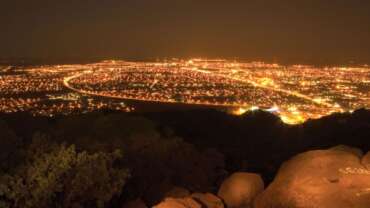
Leisure & Lifestyle in Botswana
At the extreme northern reaches of Botswana – the Caprivi just on the other side – lie three of the most splendid, wild and secluded destinations….
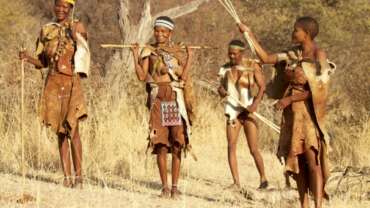
Cultural & Historical Tourism in Botswana
This rather amazing natural phenomenon, situated in the Tuli Block, is a 30 metre high basalt dyke that once formed a steep-sided natural dam….
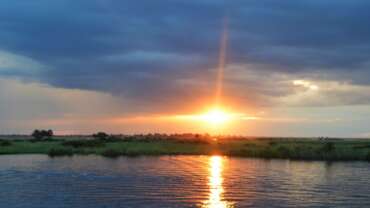
Adventure Tourism in Botswana
Whether arriving by air or road, the first glimpse of the river – deep and dazzling in the sandy terrain – is always breathtaking. It appears as a swathe….
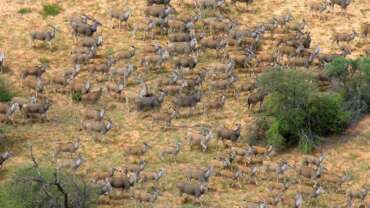
Kgalagadi Transfrontier Park
History was made when Botswana and a newly liberated, democratic South Africa signed in 1999 a treaty to form the first transfrontier peace….
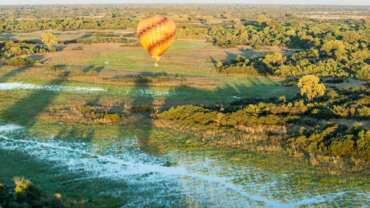
Experiences in Botswana
Experienced and knowledgeable tour guides escort groups or individuals on escorted camel rides. These intimate and charming camel rides….
Proceed Booking
Already a member, don't have an account create one., or continue as guest.
WhatsApp us

IMAGES
COMMENTS
The Khama Rhino Sanctuary was set up in 1992 to help save Botswana's endangered rhinos and to re-introduce wildlife to the area so that the local community could benefit from tourism. The rhino sanctuary also hosts school kids from neighboring communities and Botswana's second-largest city Francistown, thereby educating them about conservation.
Botswana could learn a lot from Namibia - if you want to experience Savuti, go via Caprivi if possible. Both Maun and Kasane have a lot of lovely, expensive lodges, campsites and also a growing amount of private guesthouses. The towns is growing, but apparently without much thought to the main source of income: Tourism.
Here's a rundown of the best places to visit in Botswana. The serene Okavango Delta in Botswana ©2630ben/Getty Images. 1. Okavango Delta. Best for luxurious wildlife watching. Dubbed the "Jewel of the Kalahari", the Okavango Delta is a highlight of any Africa trip. Heavy rains in the Angolan highlands swell the Okavango River, which spills ...
The Tsodilo Hills is undoubtedly one of the top tourist attractions in Botswana. Declared a UNESCO World Heritage Site in 2001, Tsodilo Hills is famed for its religious significance and is comprised of rock paintings, shelters, depressions, and caves. Often referred to as a spiritual outdoor art gallery, Tsodilo Hills showcases more than 4,000 ...
1. Okavango Delta. 982. Nature & Wildlife Areas. Immerse in the Okavango Delta's natural beauty with game drives and mokoro rides, view diverse wildlife and enjoy swimming in serene river pools amid tranquil landscapes. See ways to experience (22) 2023. 2.
A truly beautiful sight to behold, the Chobe National Park is one of the most popular attractions in Africa and makes Botswana a must-visit destination. Located in Kasane, the park comprises of swamps, floodplains and woodlands, and is home to a wide array of wildlife and birds. This is the best place in Botswana to see buffalo and elephants.
Discover the best attractions in Botswana including Chapman's Baobab, Kuru Art Project, and Central Kalahari Game Reserve. Lonely Planet. Destinations. Planning. Inspiration. Shop. Search. Saves. Open main menu. Africa. ... Cliff Trail passes an amazing natural cistern (in a rock grotto near the northwestern corner of Female Hill), which has ...
In this article, we will uncover the top 10 tourist attractions in Botswana, each offering a unique glimpse into the country's rich tapestry of natural beauty and cultural heritage. 1. Okavango Delta: A Watery Oasis. The Okavango Delta stands as one of Botswana's most iconic attractions, earning its place as a UNESCO World Heritage Site.
Learn more about the best nature attractions and the Natural Wonders of Botswana as one of Africa's coveted safari destinations. ... Botswana is a country in Africa that is also affected by the negative economy but still is proud of the stunning vastness of its natural wonders. ... The popular activities a tourist can do in the Okavango Delta ...
Here They Are: The 10 Must-See Tourist Attractions In Botswana ... There's no better way to experience the magic of the Delta than by spending time in this awe-inspiring natural wonder. The Okavango Delta is a Unesco world heritage site for those who did not know.
The Delta is also a UNESCO World Heritage Site and was voted one of the Seven Natural Wonders of Africa in 2013. ... This undoubtedly makes the Moremi Game Reserve one of the top tourist attractions in Botswana for any wildlife enthusiast. Known for its exceptional and abundant wildlife, Moremi Game Reserve and adjoining private land ...
Khutse Game Reserve, a less-than-three-hour drive west of Gaborone, is one of Africa's most underrated parks. Drawing weekend visitors from Gaborone, Khutse's salt pans and golden grasslands ...
Other natural attractions include expanses of salt flats, the Kalahari desert and some very beautiful mountains. For tourists who enjoy a spot of adventure, Botswana is the perfect destination to find both natural and manmade African landmarks, such as both the famous Tsodilo Hills and the much-climbed Kgale Hill.
See way to experience (1) 10. CARACAL Biodiversity Center. 99. Nature & Wildlife Areas. The CARACAL World of Wildlife offers an unique opportunity to get up close and personal with some of Botswana's lesser-known, less often encountered, and often poorly understood wildlife. Conservation education is at the heart of everything we do.
Religious Sites. By SundreeMiles567. The balaj temple is beautiful, the architecture with detail pictures of deities reminds me of the temples in India. 8. Boab Prison Tree. 23. Points of Interest & Landmarks. By MumbaiRiders. The Historic Baobab tree is situated in front of Kasane Police Station.
Top Best Tourist Attractions places in Botswana. Here is the list of top Tourist places in Botswana: 1. Okavango Delta. Botswana's Okavango Delta is a UNESCO World Heritage Site famed for its pristine wildness, waterways, verdant islands, and abundant animals. It's a sprawling inland delta formed by the Okavango River.
Botswana Safari: an unforgettable insight into untouched Africa. ... "Founded in 2005, Safari Online is a small, owner-run Tour Operator with 80 years of combined experience in the tourism industry. We are a family of passionate individuals who love Africa - its people, wildlife and natural landscapes - and are based in Cape Town which ...
28. Lake Ngami. 6. Bodies of Water. By 723stephenc. A lake in Botswana is a very rare feature and is an amazing sight, surrounded, as it is, by hundreds of kilometers of... 29. Seboba Nature and Recreational Park. 7.
Botswana is a country known for the presence of vast natural areas where a multitude of animals live in its natural state. In particular, among the most famous tourist attractions of Botswana is the area of the so-called Okavango Delta. A vast swampy area where the waters of the Okavango river end in a large delta.
Okavango Delta. Tourist attraction. The Okavango Delta in Botswana is a large inland delta formed where the Okavango River reaches a tectonic trough in the central part of the endorheic basin of the Kalahari. All the water reaching the Delta is ultimately evaporated and transpired, and does not flow into any sea or ocean.
Tourists at Sedudu Island. Hippos and elephants in Chobe. Botswana 's principal tourist attractions are its game reserves, with hunting and photographic safaris available. Other attractions include the Okavango Delta [1] region, which during the rainy season is a maze of waterways, islands, and lakes. [2] The tourism industry also helped to ...
Things to Do in Botswana, Africa: See Tripadvisor's 64 687 traveller reviews and photos of Botswana tourist attractions. Find what to do today, this weekend or in April. We have reviews of the best places to see in Botswana. Visit top-rated & must-see attractions. ... Wild animals in natural habitat. Smell of grass, colors, waiting for new ...
Natural Attractions in Botswana. Experience the stunning beauty, the unimaginable vastness, the isolation and other-worldiness, the astoundingly prolific wildlife of the best kept African secret - Botswana. ... This community tourism project, managed and staffed by local village residents, offers game drives, birding, bush walks, and arts and ...